Our previous forays into Thailand saw us in Bangkok and in Phuket, neither of which really appealed to us at all. The food has always been good (with the exception of the coriander) however the general feel of these two areas have been too touristy and aggressively in your face for our liking.
So this trip we thought that we would head north, up into the mountains near the Laos and Myanmar borders. Another area with lots of old temples and hopefully some great food options. Myanmar was one of our favourite countries to visit, however, the current political situation has made it an international no-go zone, we figure we will be close enough to the border that some of the culinary offers may have leaked through the border.
About Chiang Mai

Chiang Mai was founded in the 13th century (1296) and is set high in the mountains. It was the capital of the Lanna Kingdom (18th and 19th century) where it was (and remains) the religious and cultural centre of the region. The old part is a walled city with 4 gates.
Within the walls of the old city, the narrow streets are filled with shops, bars, restaurants, markets and more temples than you count. In the centre of the Old Town are the temple ruins of several temples along with many brand new and functioning ones. In fact there are over 300 wats scattered throughout the city and surrounding countryside.
Dead centre is the Chiang Mai arts and cultural centre along with the Three Kings Monument with the Wat Inthakhin Sadue Muang Temple just to the left as you look at it.
The Temples (Wat)
The sheer number of temples (known as Wat) within the walled city is amazing, you virtually cannot walk a block without hitting at least one, often times more. The other thing that is fair to say is that one Thai temple is remarkably similar to the next and the one before.


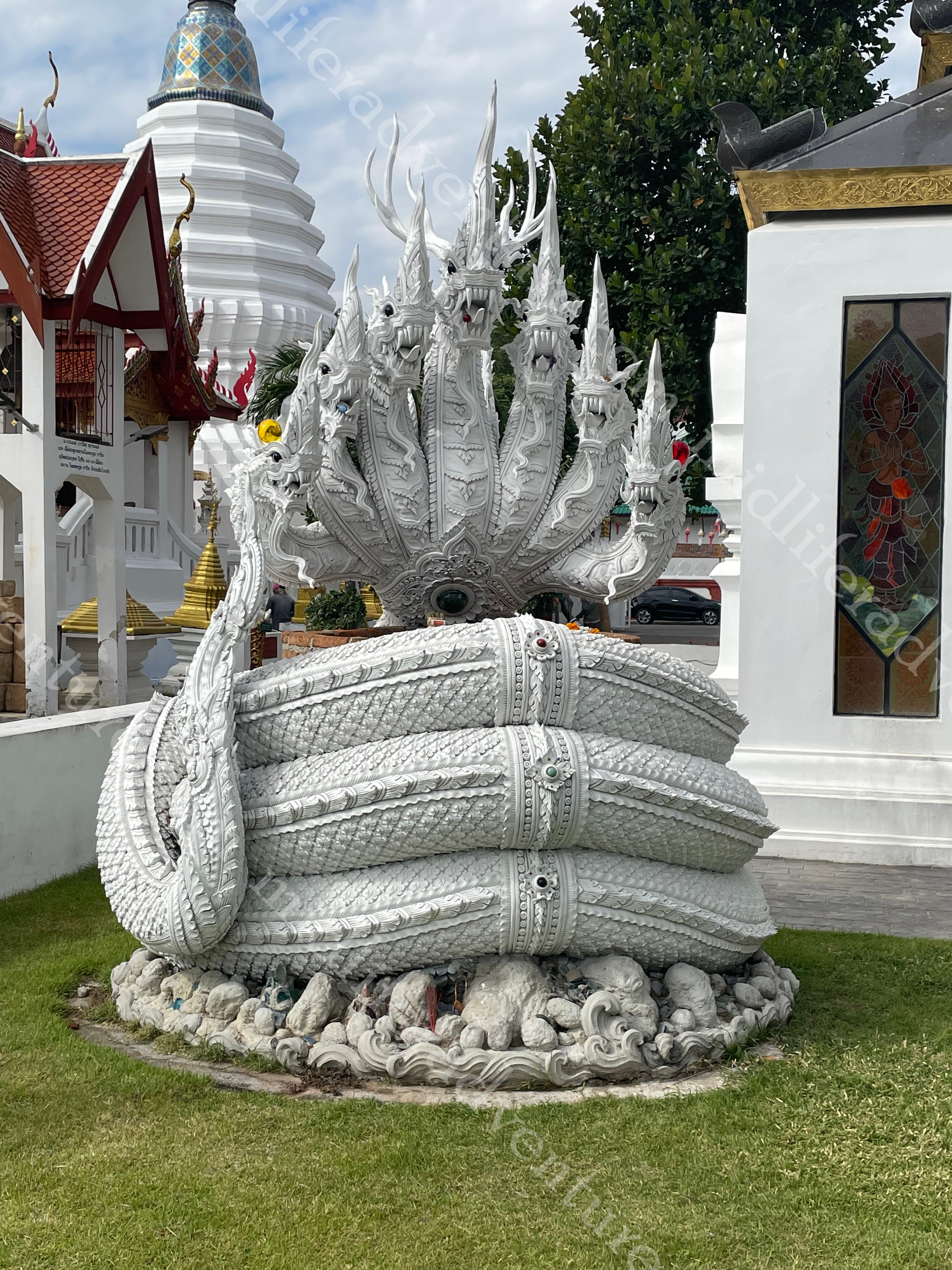
The anatomy of each Thai temple is pretty similar, there is the Phutthawat which is the area devoted to buddha. It can contain several buildings but would typically include a Stupa (Chedi) the bell shaped tower, prang (a tower), an ordination hall (bot), shrine/s (wihan), and several pavilions (sala) for receiving religious education or merely for shade.



The Sangkhawat contains the majority of the working parts of the temple including the kitchen and the monks living quarters, there may also be pavilions in the sangkhawat.
The roofs usually are split into 2-4 tiers and the bargeboards are ornately decorated with a serpent style carving known as a lamyong.
Things to do in Chiang Mai
Our early research showed the abundance of temples, bars and of course food. The Three Kings Monument is in the heart of Old City in front of the arts ad cultural centre. The statue portrays the three founders of Chiang Mai, in the 13th century – King Mengrai, King Ramkhamhaeng and King Ngam Muang.


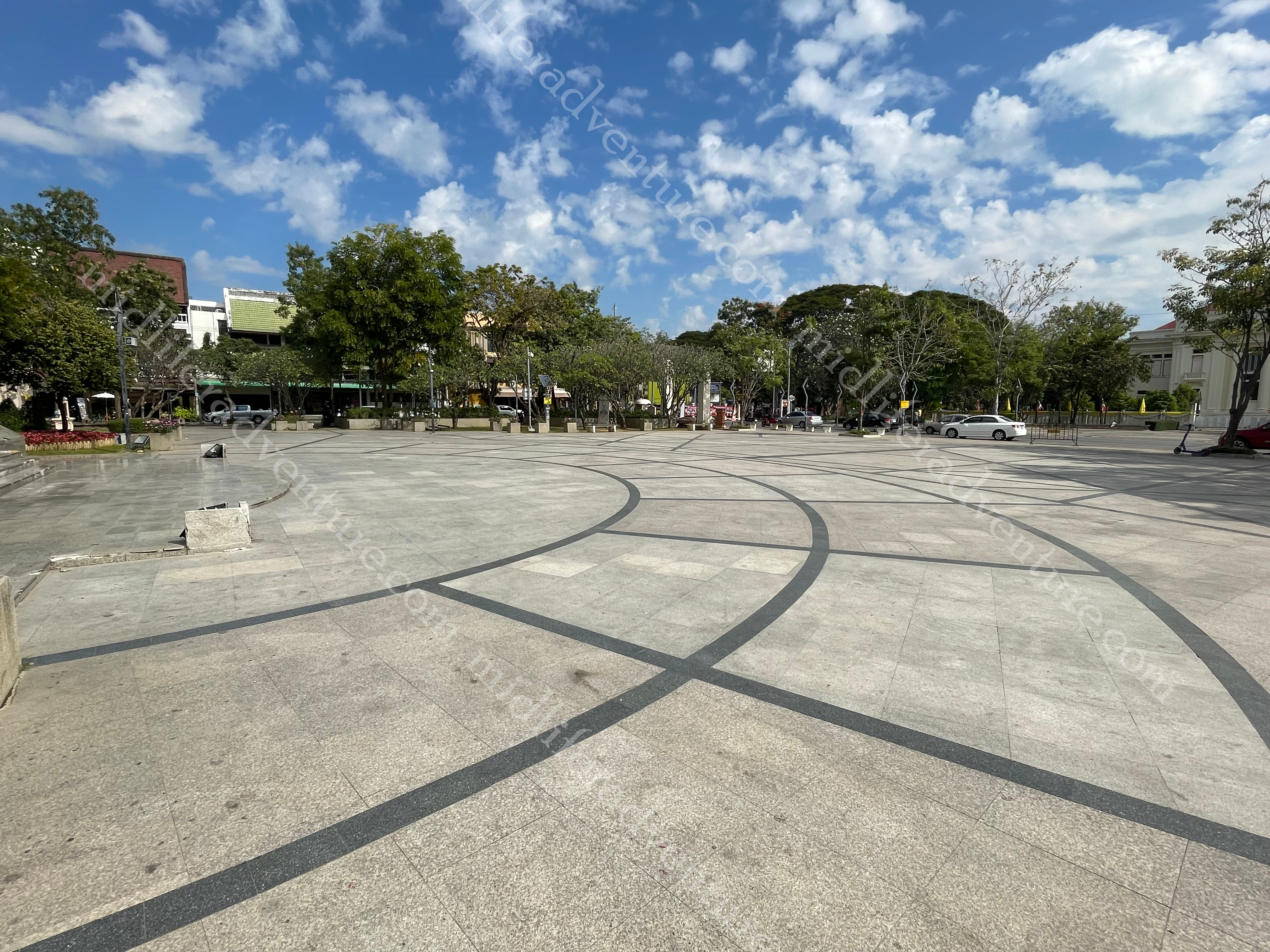
The gates
The Chang Phueak (Chang Puak) Gate faces north and is in very poor condition, however it is the site of the best street food markets virtually every night of the week. Head to the gate, take your life into your hands crossing the road and turn left. There are stall after stall selling almost anything you want for not very much…and it is all good.
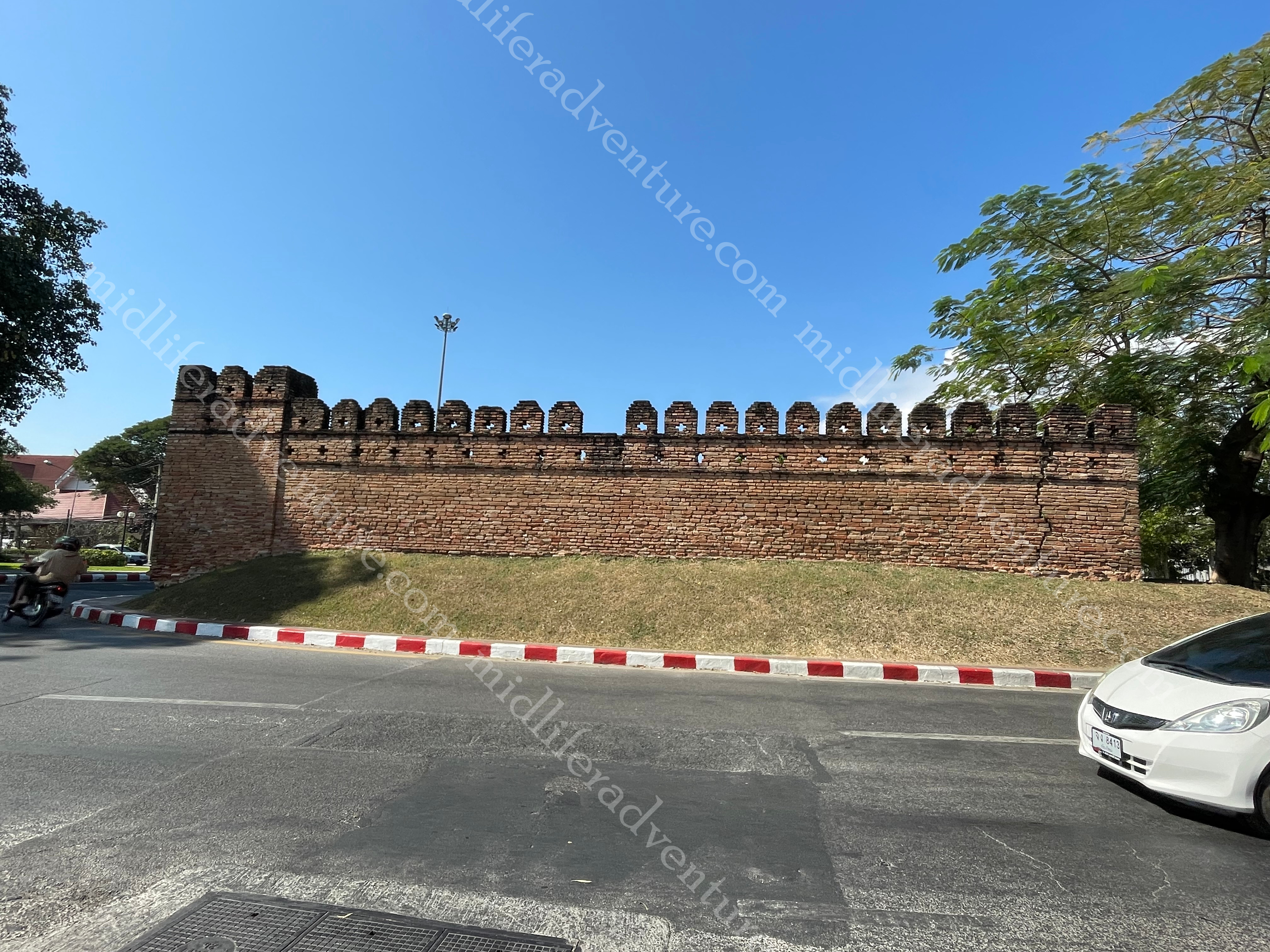
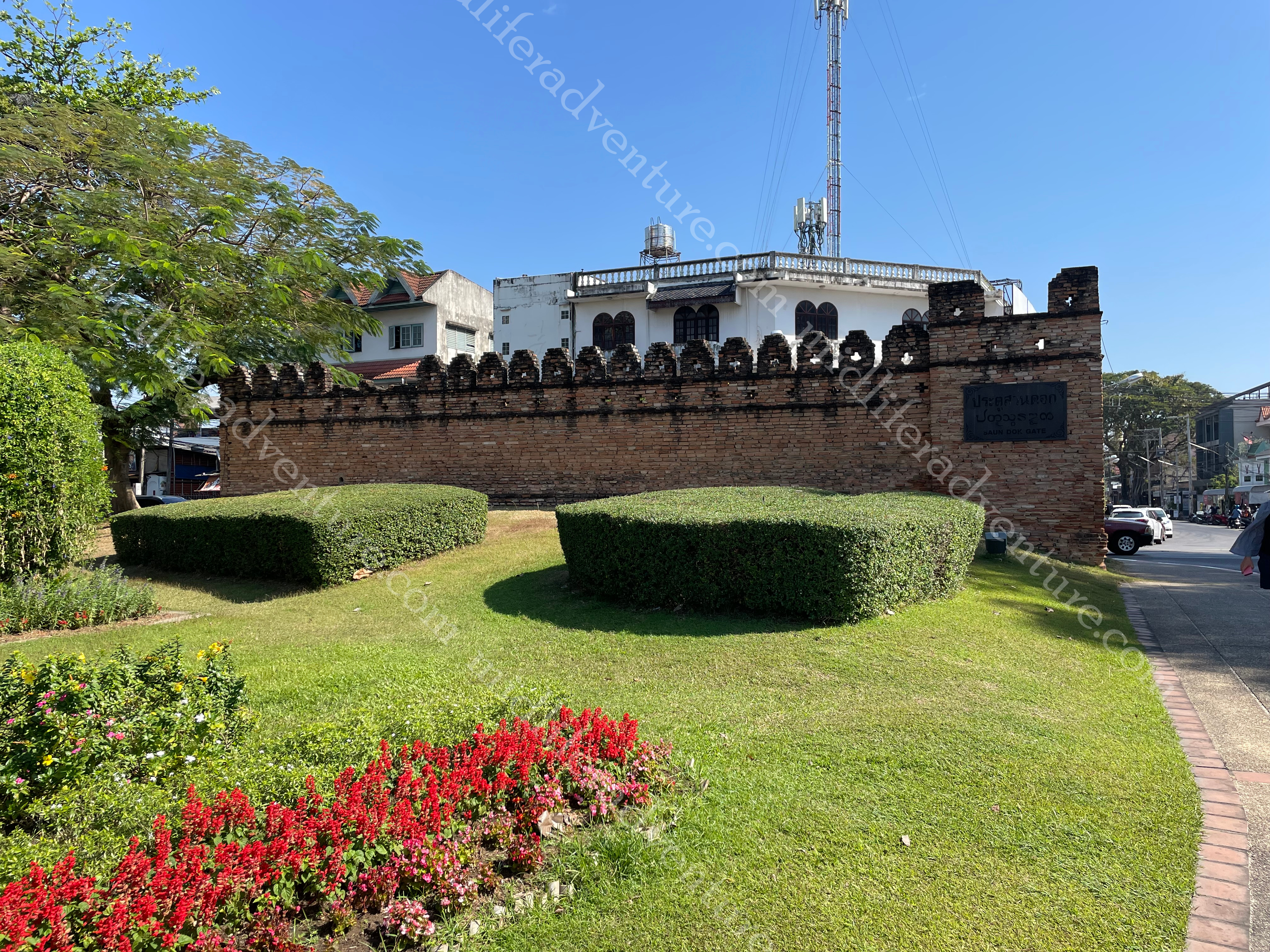

The tha phae gate faces east and is the best, most preserved (renovated) and most tourist friendly of all of the gates of the old city. Because of this it is always busy and has developed an unusual tourist attraction – the pigeons. Groups of roaming touts feed masses of pigeons to get them to cluster then charge tourists money to take photos of them after banging and yelling loudly to get the pigeons to fly. The end result is a lot of noise and some photos of people with birds fluttering about them.
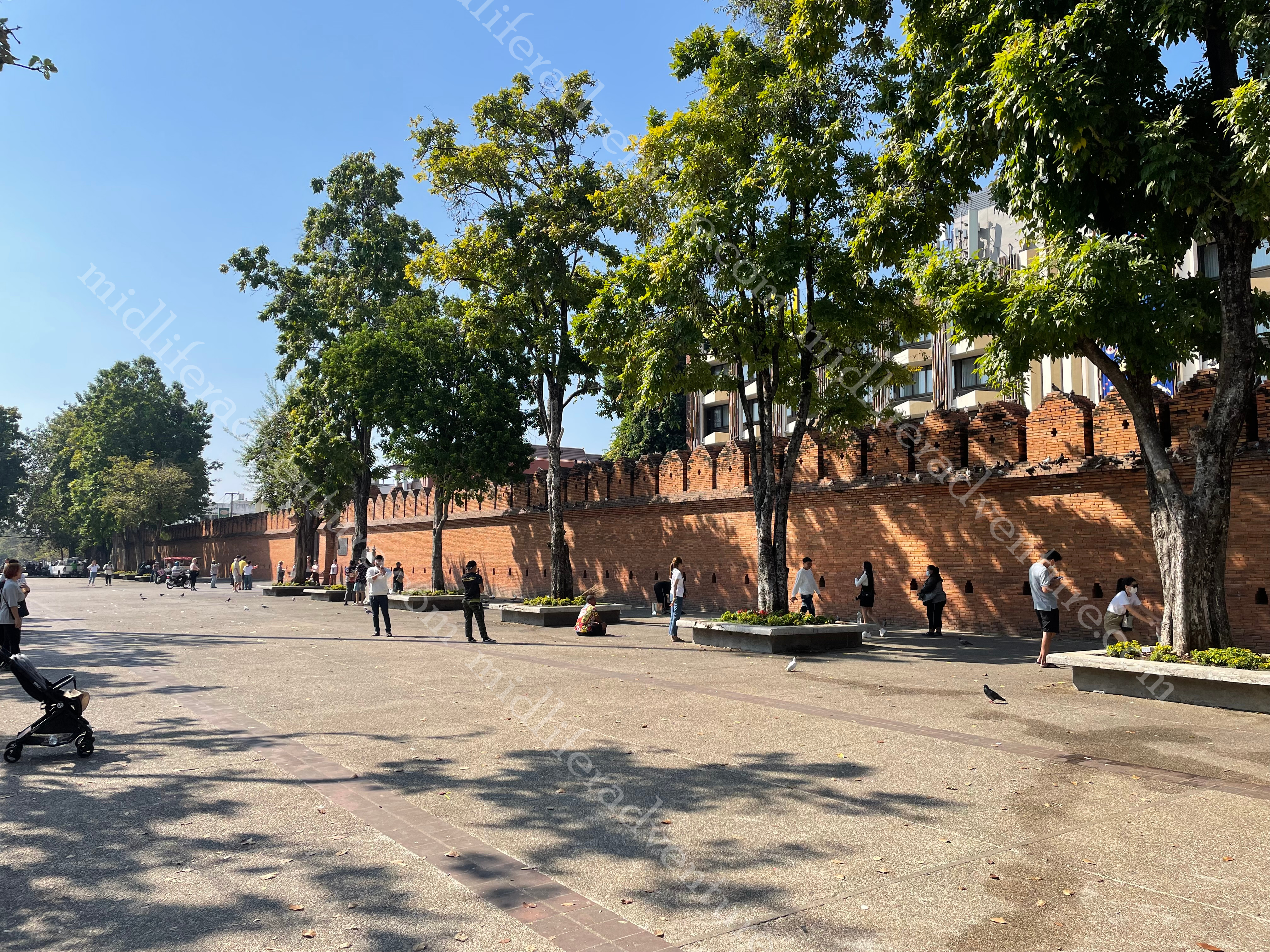
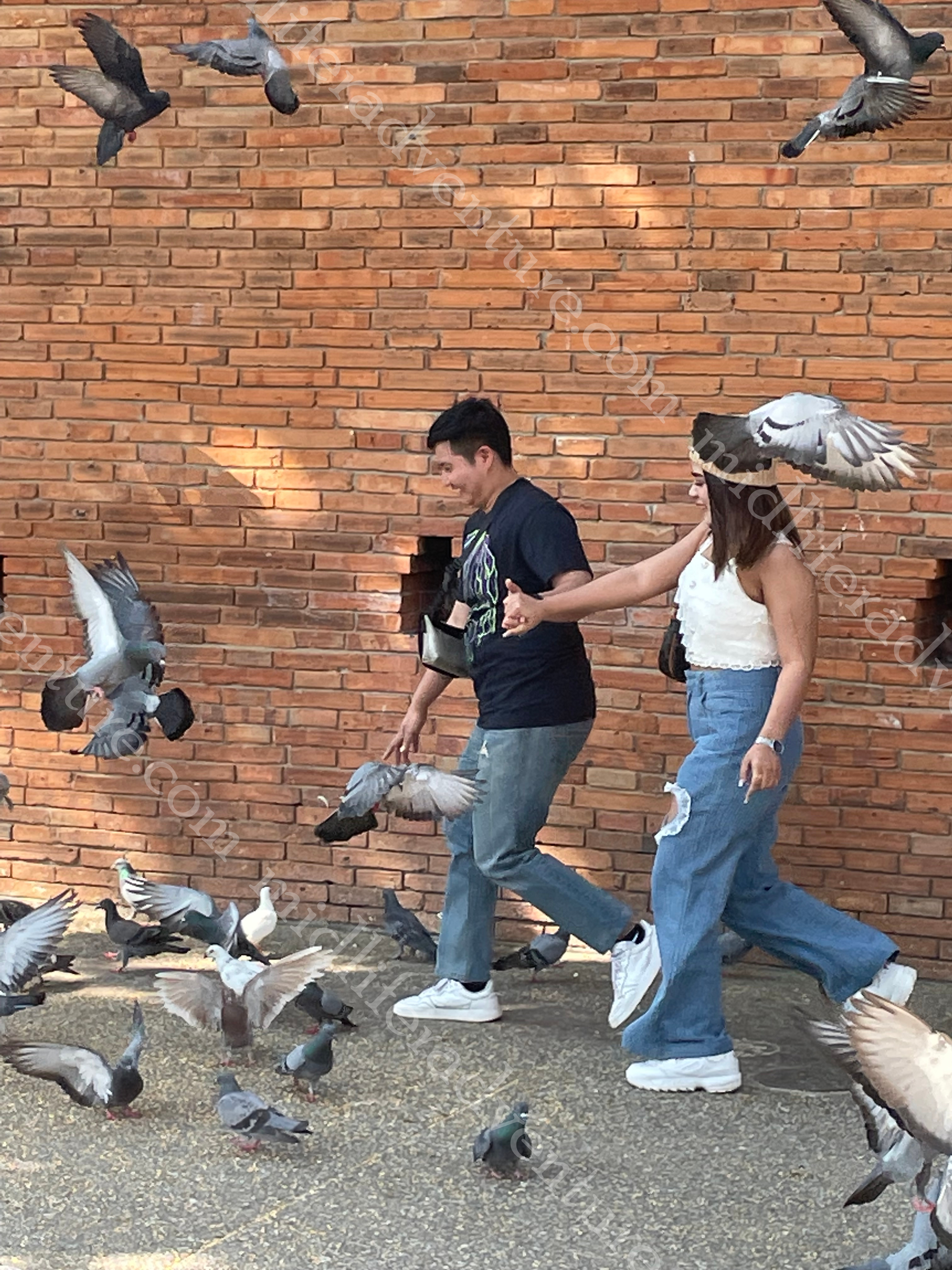
The Chiang Mai gate faces south and is in a reasonable state however due to COVID many of the businesses in the vicinity are closed so many of the shops are not operating.
The Suan Dok gate is to the west and is possibly the second best preserved of the gates. However similar to the south gate many of the businesses are not currently operation (early 2023).
At the north-eastern corner of the city you will find the Si Phum Corner. This is the site of the original unrenovated wall that is slowly crumbling into the canal that surrounds the old city.
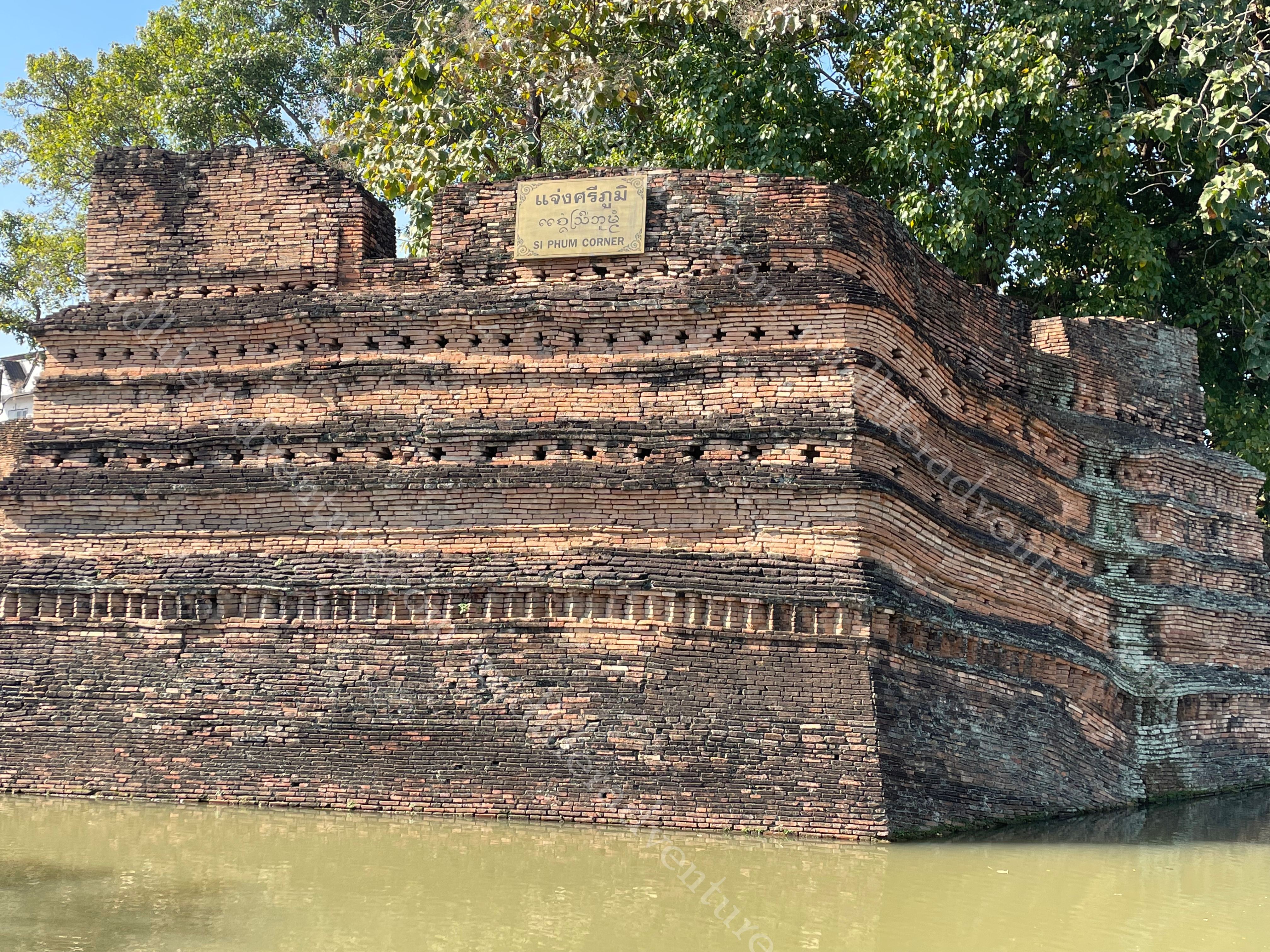
The temples around town
As mentioned before, the sheer number of temples in town is staggering and there is no way that I am going to list or visit them all. But here is a sample of some of them and a bit of an idea about each.
Wat Chedi Luang is at the centre of the city and is commonly known as the big temple. Wat Chian Man is the oldest of the temples in Chiang Mai built around 1296-97. Wat Saen Muang Ma Luang (also known as Wat Hua Khuang) is one of the most beautifully maintained and grand looking temples


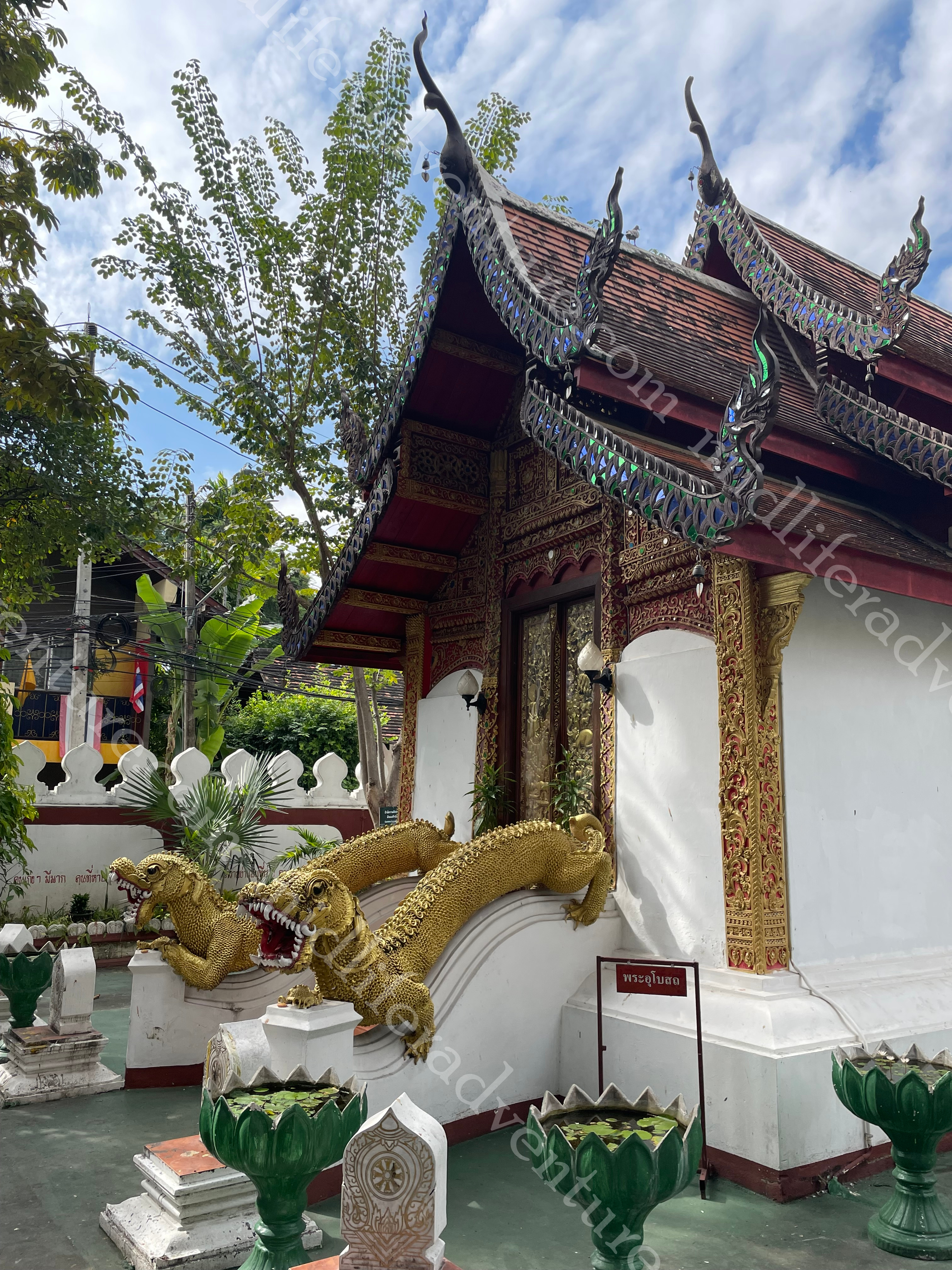
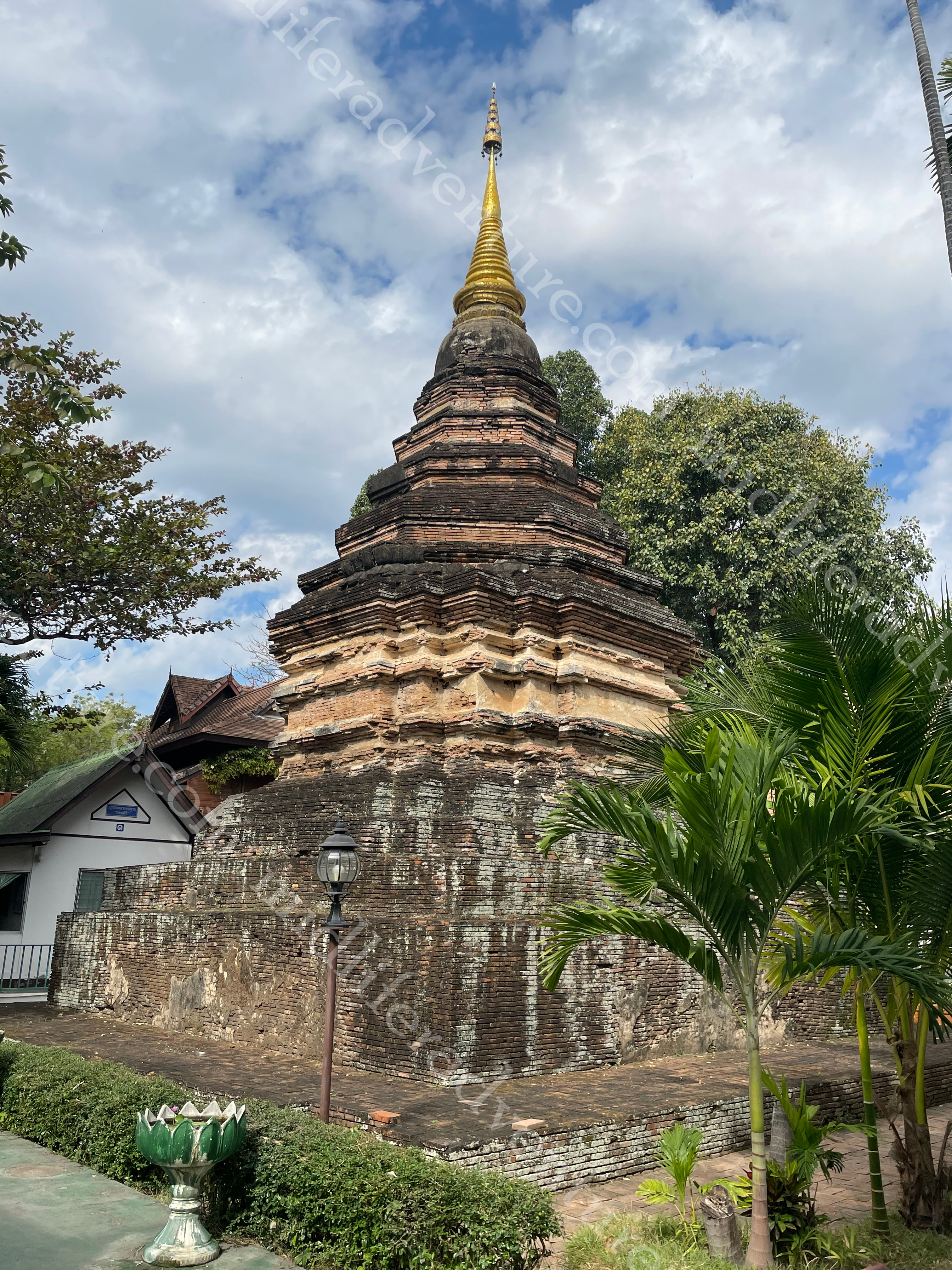

Wat Inthakhin Sadue Muang was built over 700 years ago and literally translates to “temple of the city navel”, due to its location in the center of old city. Wat Umong Mahathera Chan is not as ornate and is basically a collection of brick stupas for monks to meditate inside.
Night Markets
The Sunday night market (or Sunday walking market ) is the most famous and the most popular but there are night markets oevery day of the week if you care to look a little further afield. As mentioned above in the gates section we regularly hit the night food markets outside the northern gate but it was just for food and not really for shopping.
The Sunday walking market is essentially the one for the tourists and is the most popular with them. It has a wide variety of the expected local art, craft, music. The thing it does possibly better than the others is the incorporation of food stalls (and ore importantly somewhere to sit and eat them) in more than one location. In addition, the various massage vendors are there and on hand to offer a foot massage should it be needed.
Chiang Mai Night Bazaar is probably the largest of the markets with hundreds of shops in one place and it is open every day.

It is outside the old city on the eastern side. This night bazaar offers virtually everything including shoes, bags, clothes, handicrafts, artwork, sunglasses, and electronic items. The Anusarn Night Market, Ploen Ruedee Night Market and Kalare Night Markets are all in the same vicinity and as far as I could tell they would be indistinguishable as to where one stops and the next one starts. But they are all open each evening from 6pm.
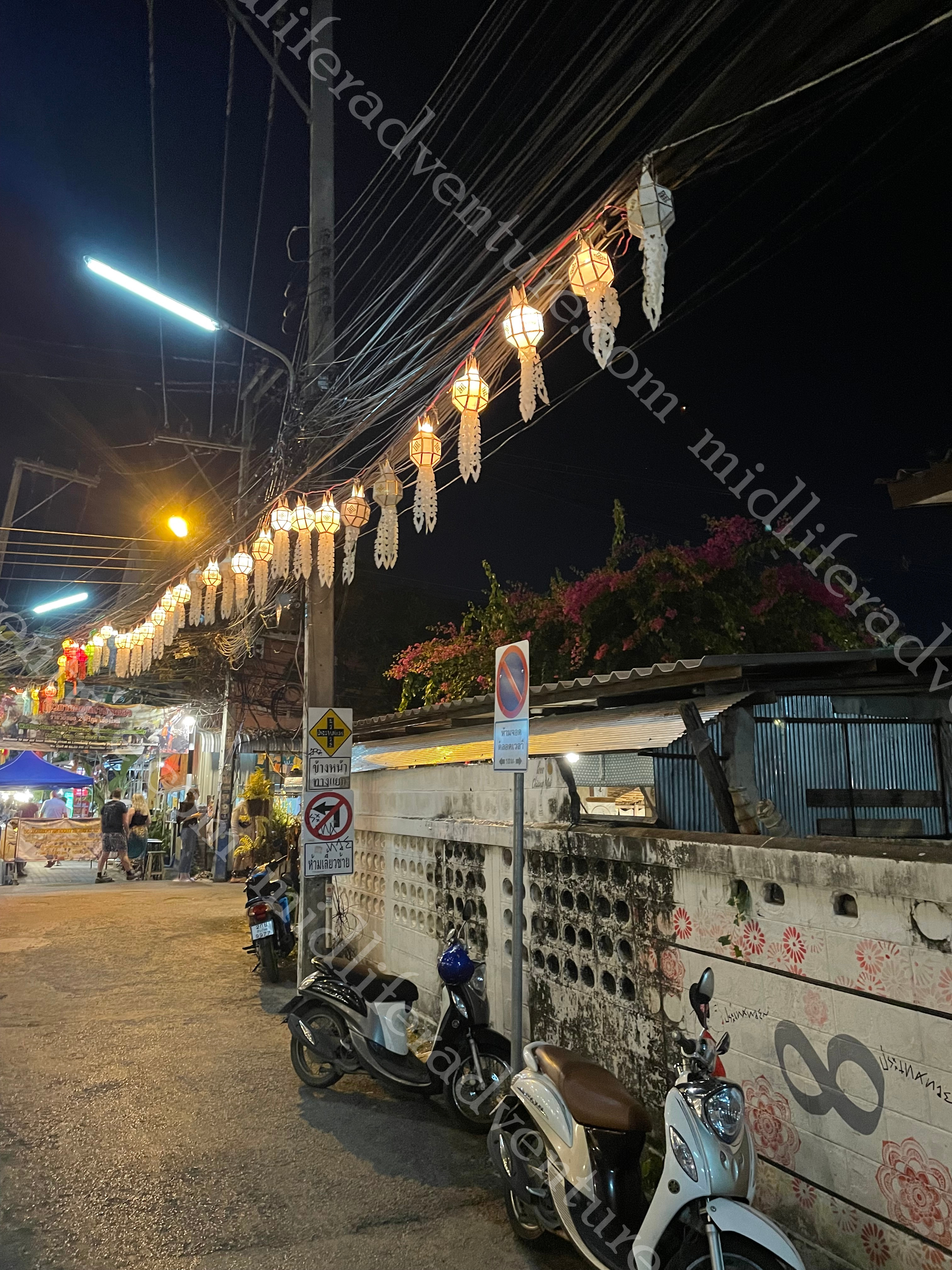
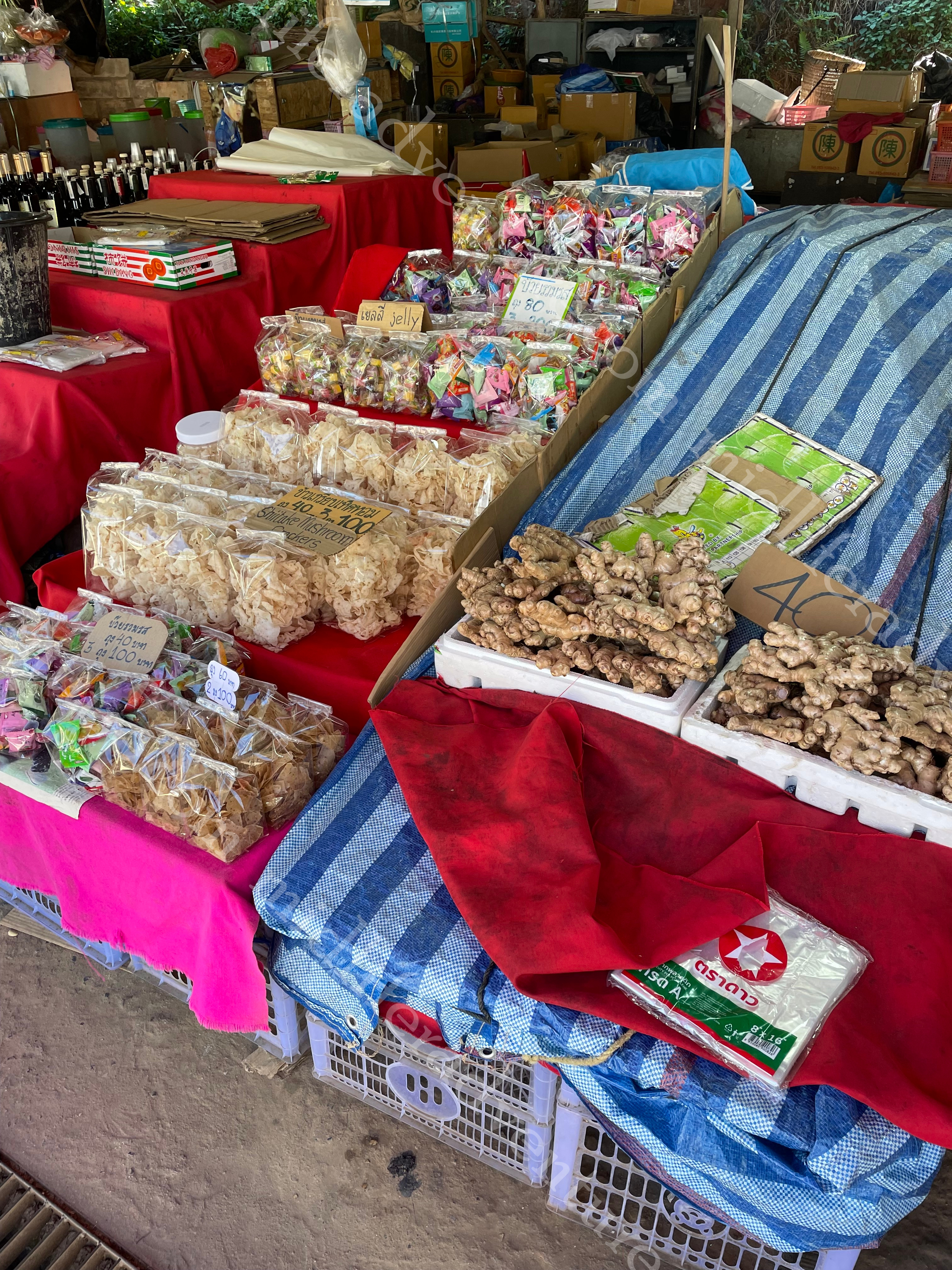
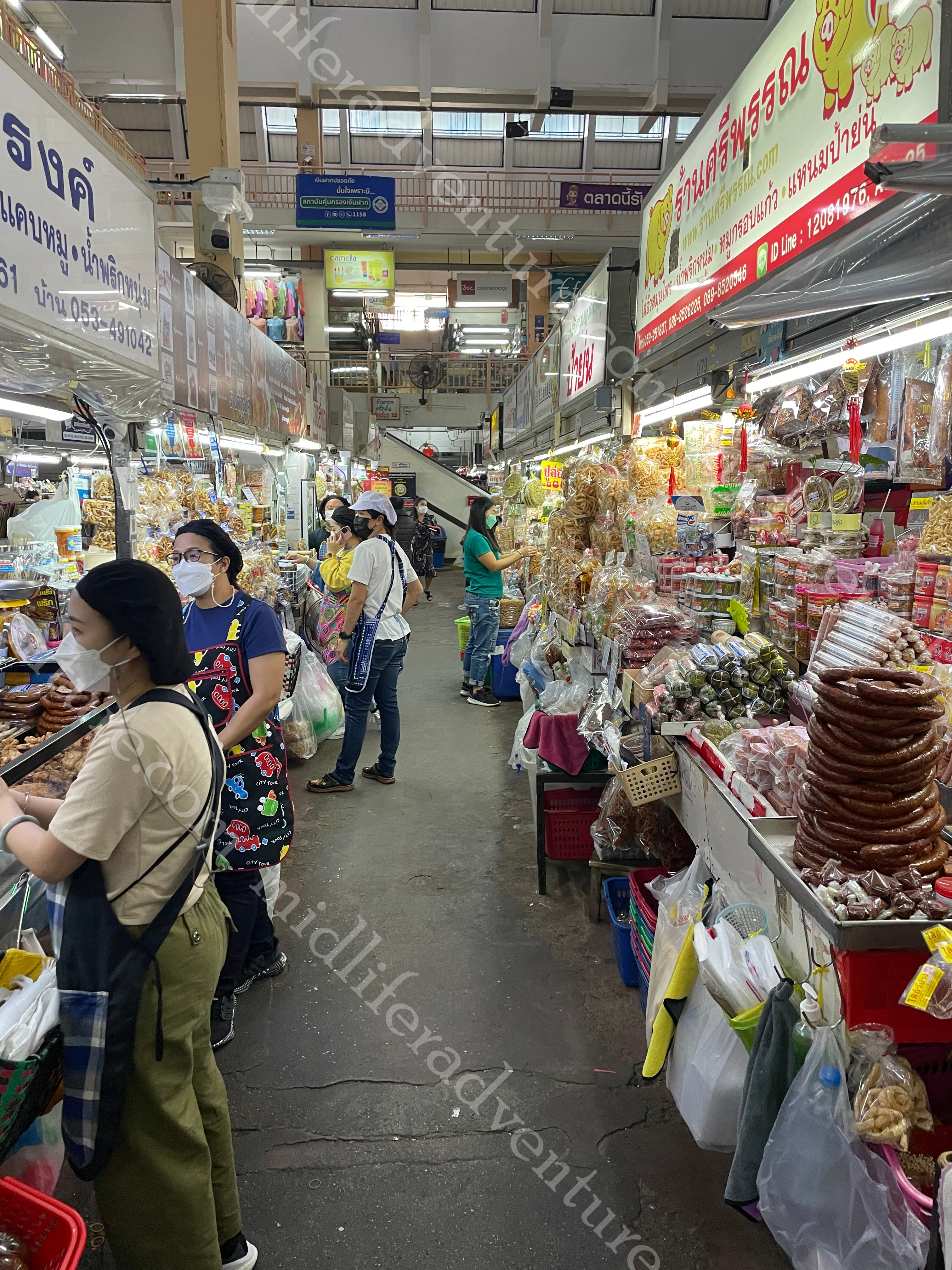
The Wualai walking street and Gate markets are situated at or just outside the southern gate of old town while the Wororot markets can be found in the heart of Chinatown.
I got my shoes resewn here for the ridiculous price of $3 as I had a blowout – probably from all the stairs.

Getting Around in Chiang Mai
The local preference and probably easiest for getting around is the Songthaew – pronounced song tail (aka Road-Daeng, Red Taxi or Red Truck). It is basically a converted ute with two rows of seats in the back. The most common one used in Chiang Mai is red and all you need to do is hail one down, tell them where you want to go, ask the price and if it is in the general direction they are heading then they will take you. If not, try the next one. As a guide about 30 baht ($1-1.30) will get you almost anywhere in town. If you don’t want to share your ute with the locals then you can pay more and hire a private one (similar to a taxi).

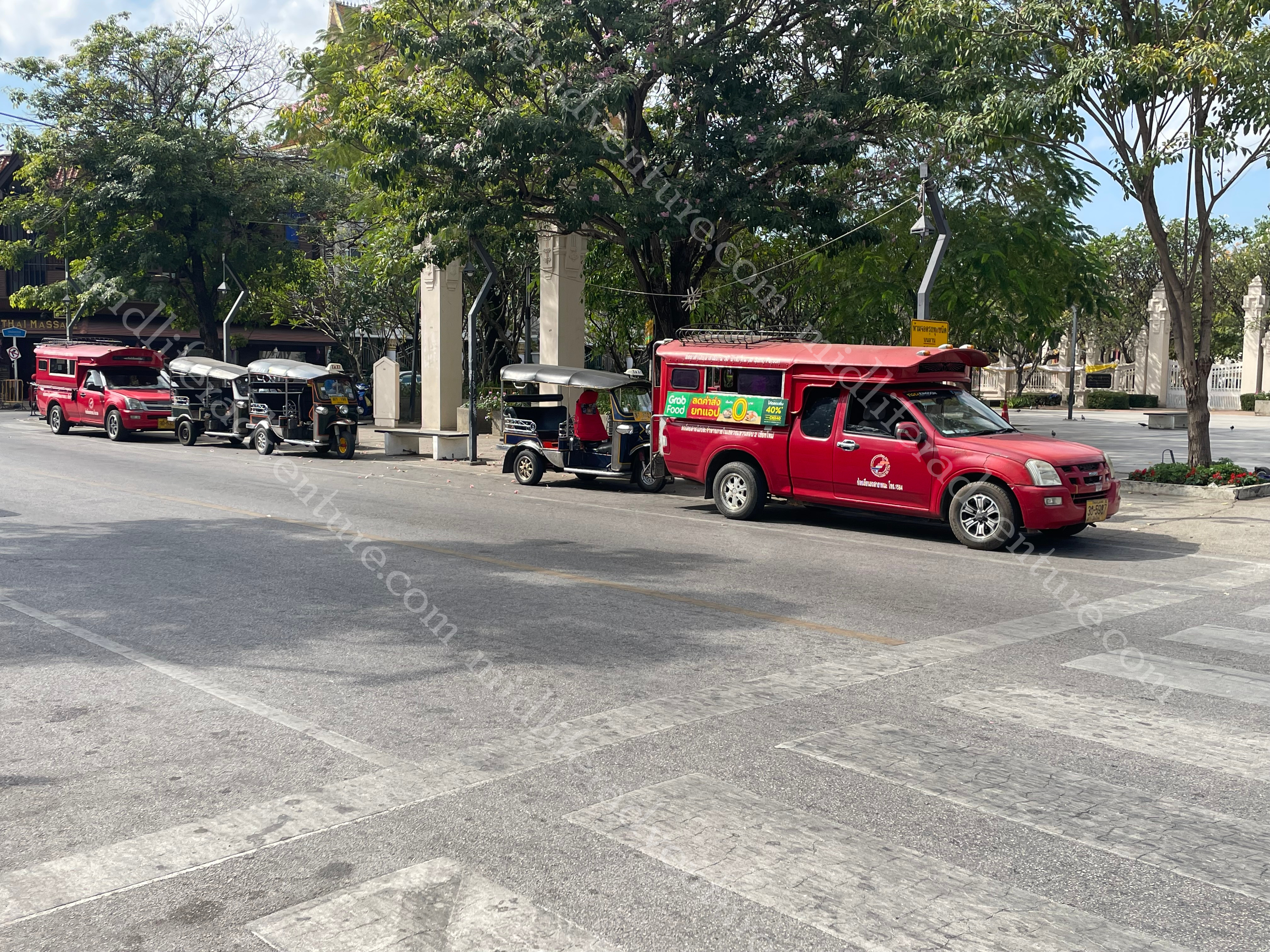
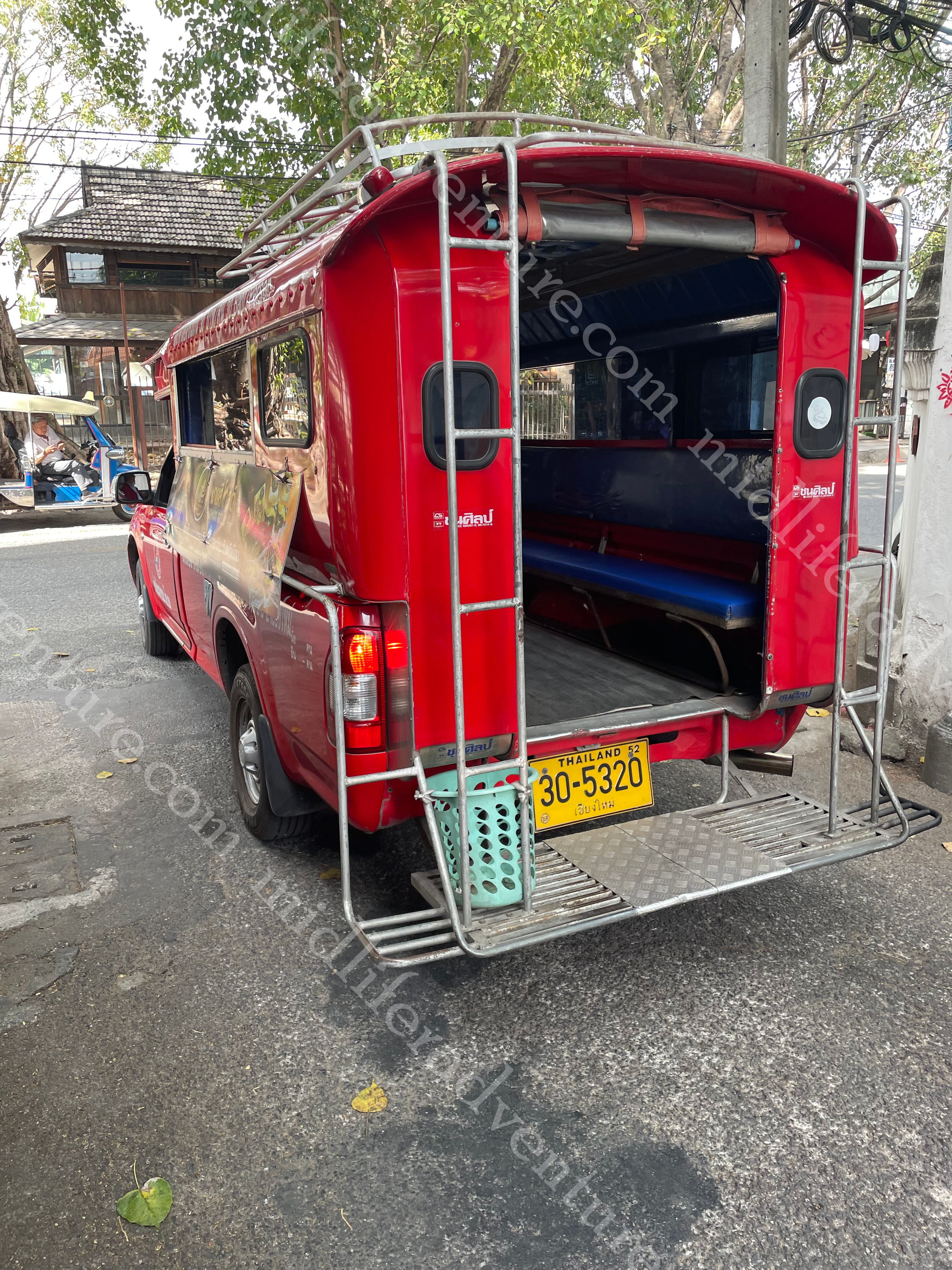
Tuk Tuk – is the second most common transport however is more expensive than the Songthaew with the rates starting at 60 baht for a short trip and 100 to 150 baht for longer distance.
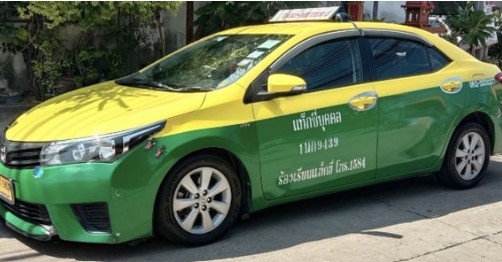
Taxis – There are actual taxis that exist however they tend to park up at the airport, railway station, bus station, malls, and hotels.
Ridesharing – is available and they generally use the apps either Uber or Grab. In fact if you are planning on spending any significant amount of time in SE Asia it is probably worth downloading the Grab app as it is widely used in Thailand, Vietnam, Malaysia, Singapore, Indonesia and the Philippines.
Bus – the Smart city bus was introduced in mid 2018 and for a flat rate of 30 baht you can get on and get around. Coins can be used as can the rabbit card that is used in Bangkok for use on the MRT or the BTS Metro Systems. Two tourist card options can be bought that will give you unlimited riding for 180 baht for one day or 400 for 3 days.
Samlor – this is the traditional Thai rickshaw – powered by some skinny old guy pedalling you around. I cannot tell you the prices as I can not bring myself to order one. The thought of a 70 year old, 40kg Asian dude struggling to peddle my fat ass around is something that I will just not do.

Rent a motorbike – this is very cheap at about 100-200 baht for 24 hours that will get you a 100cc motorbike and 2 helmets with the more powerful 110-125cc bikes with automatic transmissions costing more. Beware some places will want to keep your original passport as collateral. Also as a westerner you will be stopped frequently by police to check that you have your helmet, international licence and that the bike is not too powerful (read here that you will need to bribe your way out if you do get stopped).
And of course car rentals and tours are always available.
Things to do around Chiang Mai
Wat Phra That Doi Suthep
This is the most famous and most frequently visited of the temples in the region It is easy to get to (about 15 km from town) with most of the transport options (explained below) getting you there with very little fuss. It was built in the early 19th century and is set atop a hill with amazing views over Chiang Mai.

Upon arrival you are met with the usual tourist stalls before you find the stairs (306 of the buggers) to the temple. The stairs are lined by the seven-headed serpent statues (naga) – there is a funicular if you really are not up to the stairs.
Once you have made it up the hill you will find the temple where a golden pagoda sits that is said to contain a bone from buddha’s shoulder. On the terrace you will find a statue of the white elephant that allegedly carried the bone to the temple. As usual for this sort of place you will also find the obligatory shrines and monuments. For those willing to pay the money there is also a night tour available.
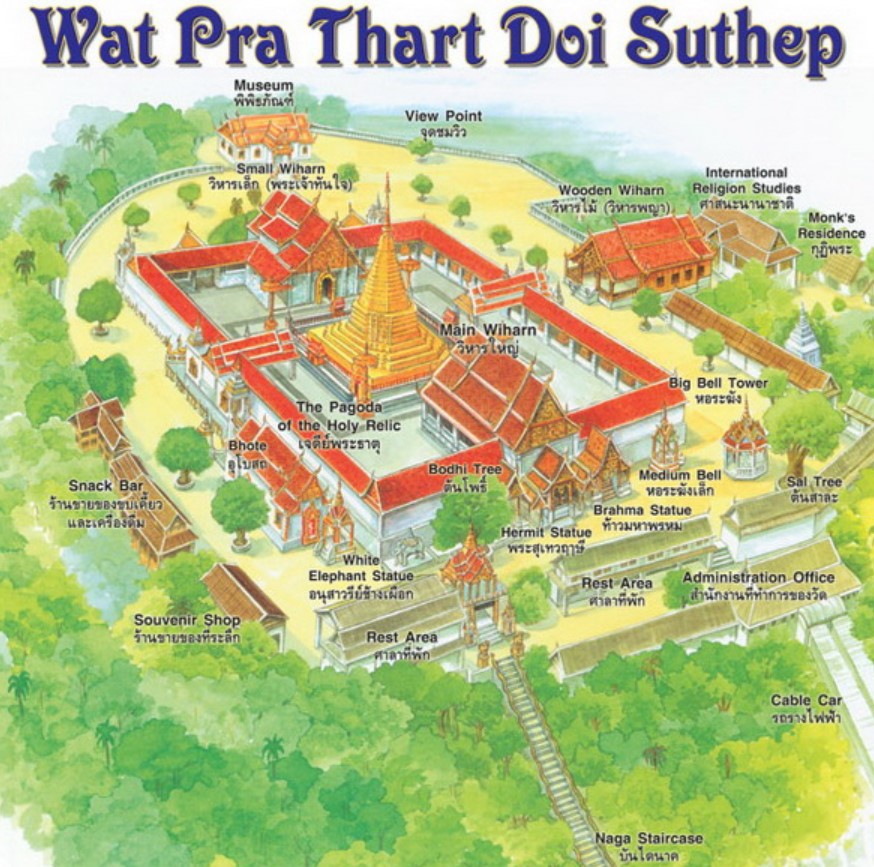


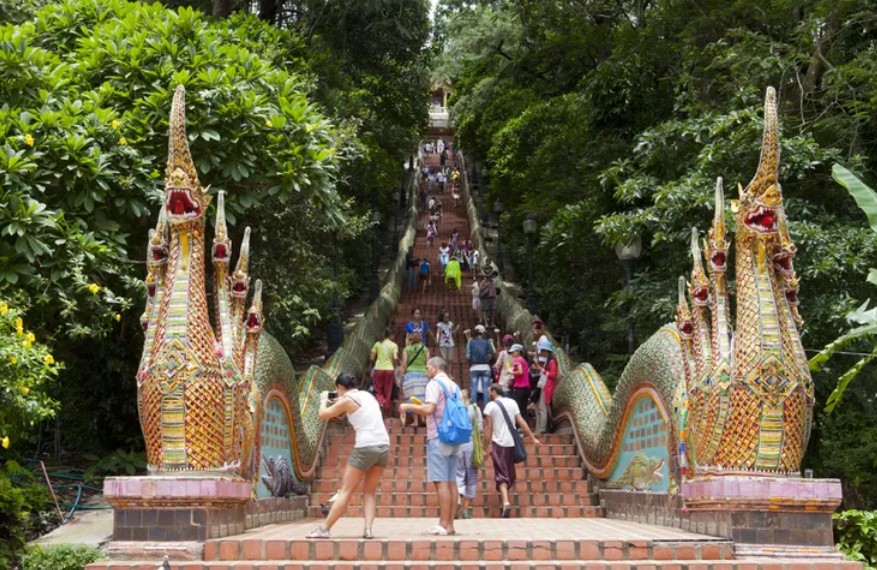
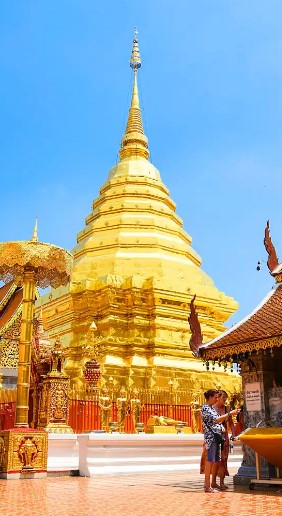
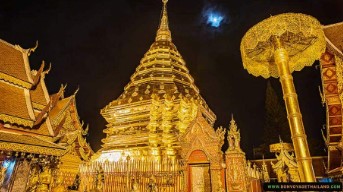
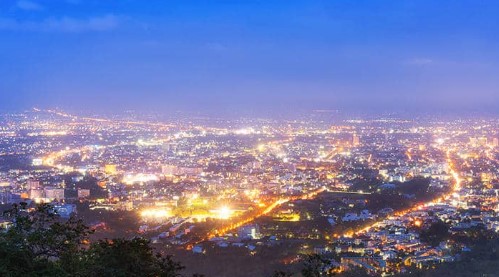
If you are willing to pay a little more and take a private trip, there is a night tour available.
Bhubing Rajanives Palace was built in 1961 as the king’s residence when he came to stay in Chiang Mai. It is about 22 kms from old town on Buak Ha Mountain. The gardens are perfectly manicured with extensive plantings that would send a gardening nut into fits of rapture. From my side…it was very pretty.

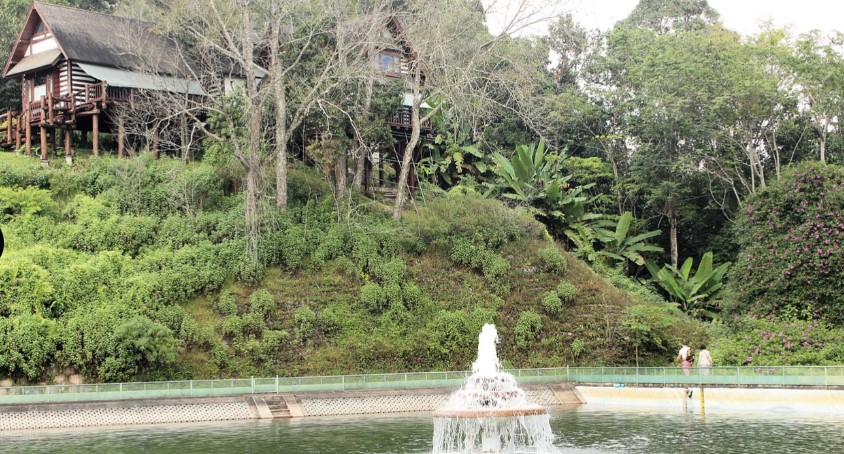

Doi Inthanon National Park is the highest point of Thailand and home of the beautiful King and Queen pagodas. There are tours heading here all the time and many of them will include some of the items listed below as well. This is a truly stunning spot and well worth the visit. While there are a ton of stairs to get to the Pagodas they have thoughtfully considered us old buggers and put an escalator (up only) to the top of each side…very civilised.

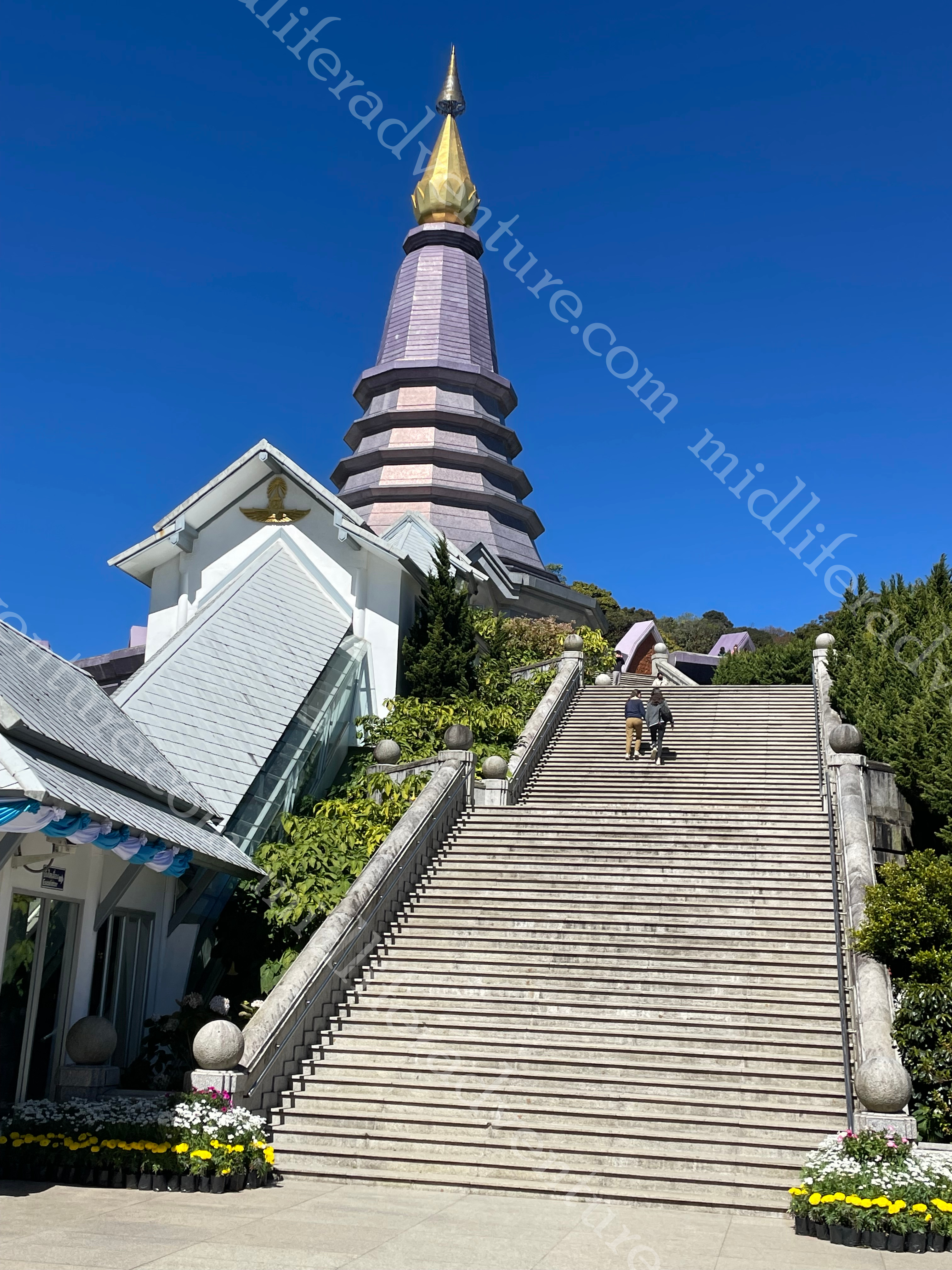




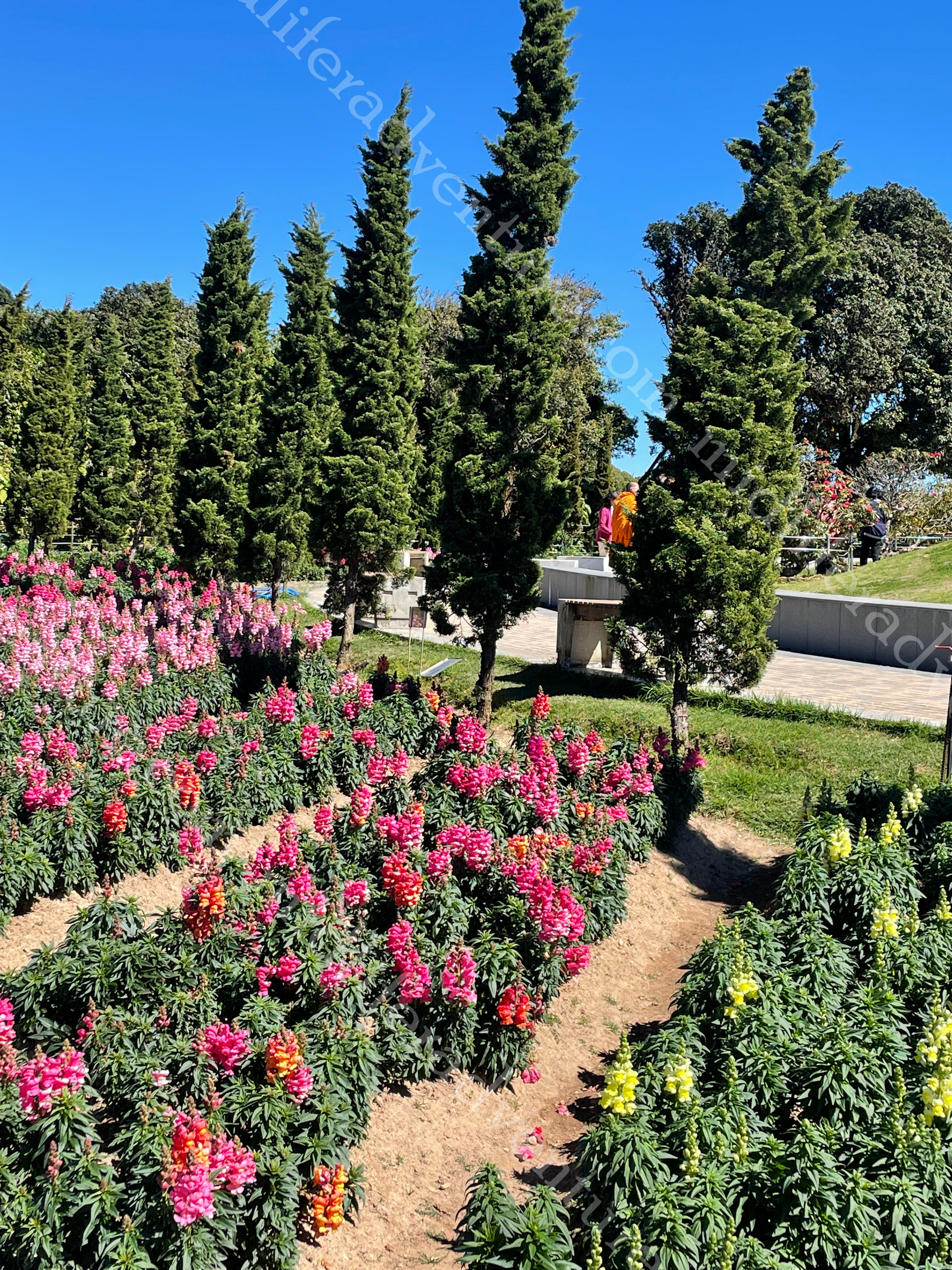
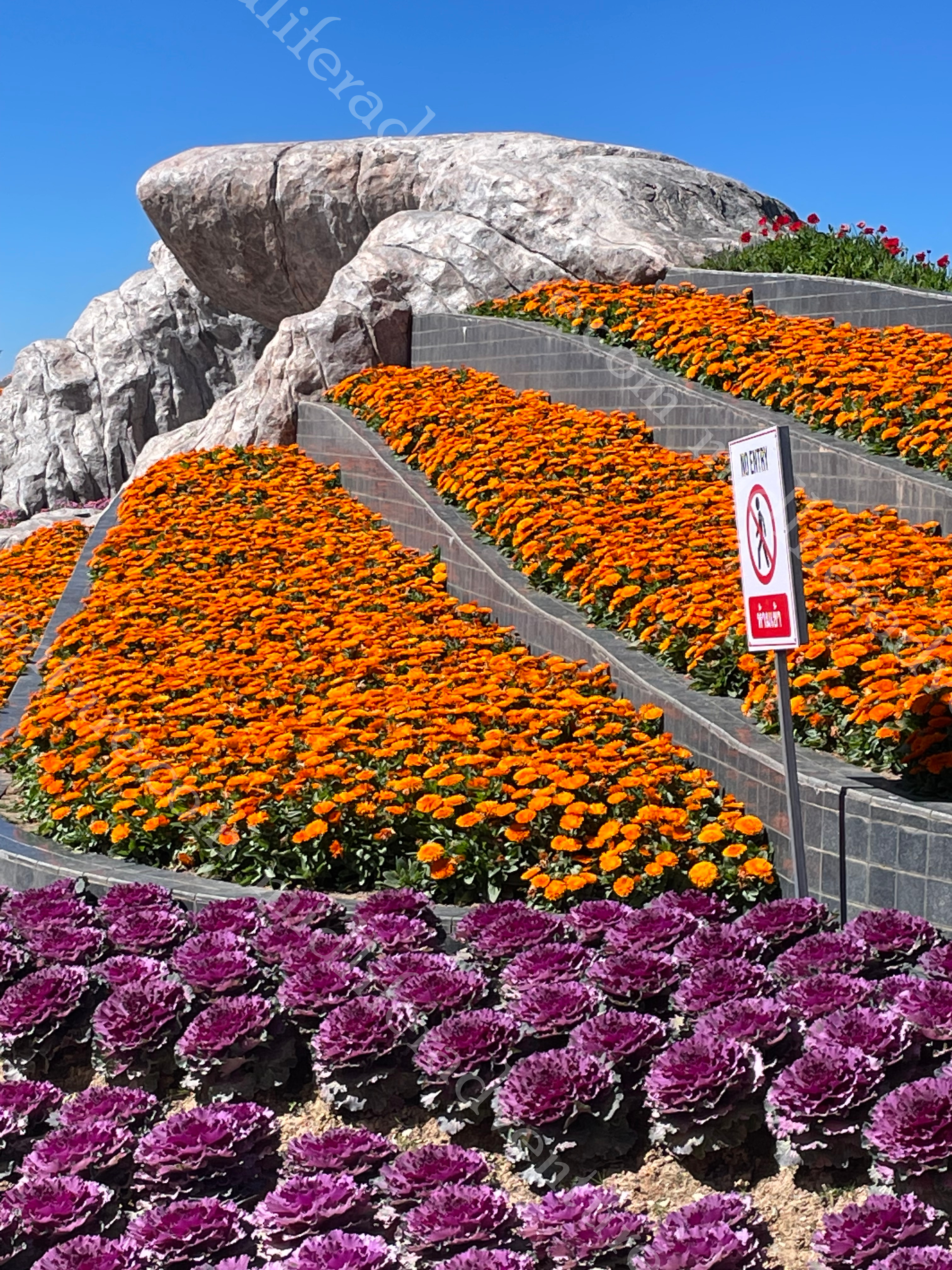



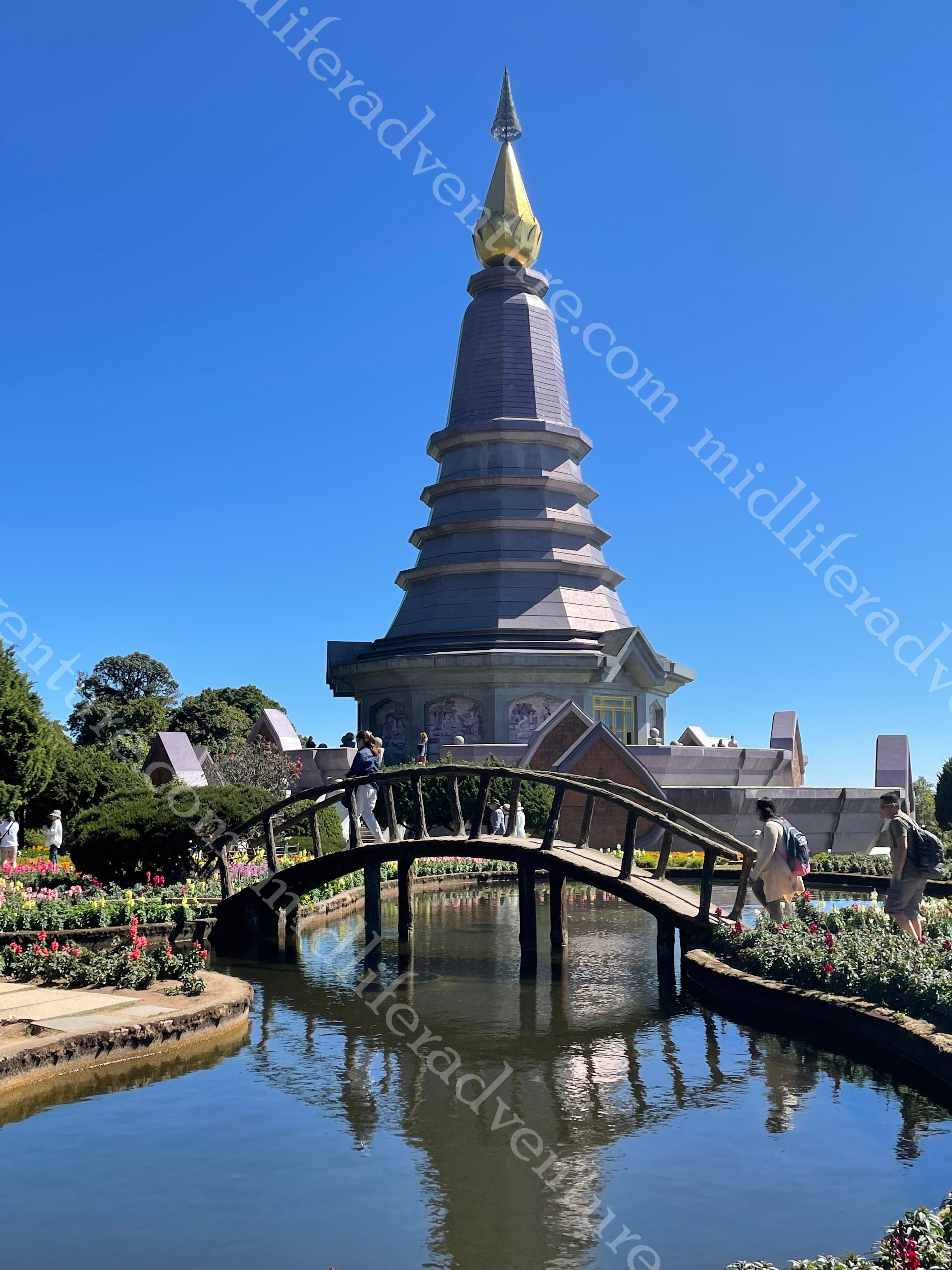
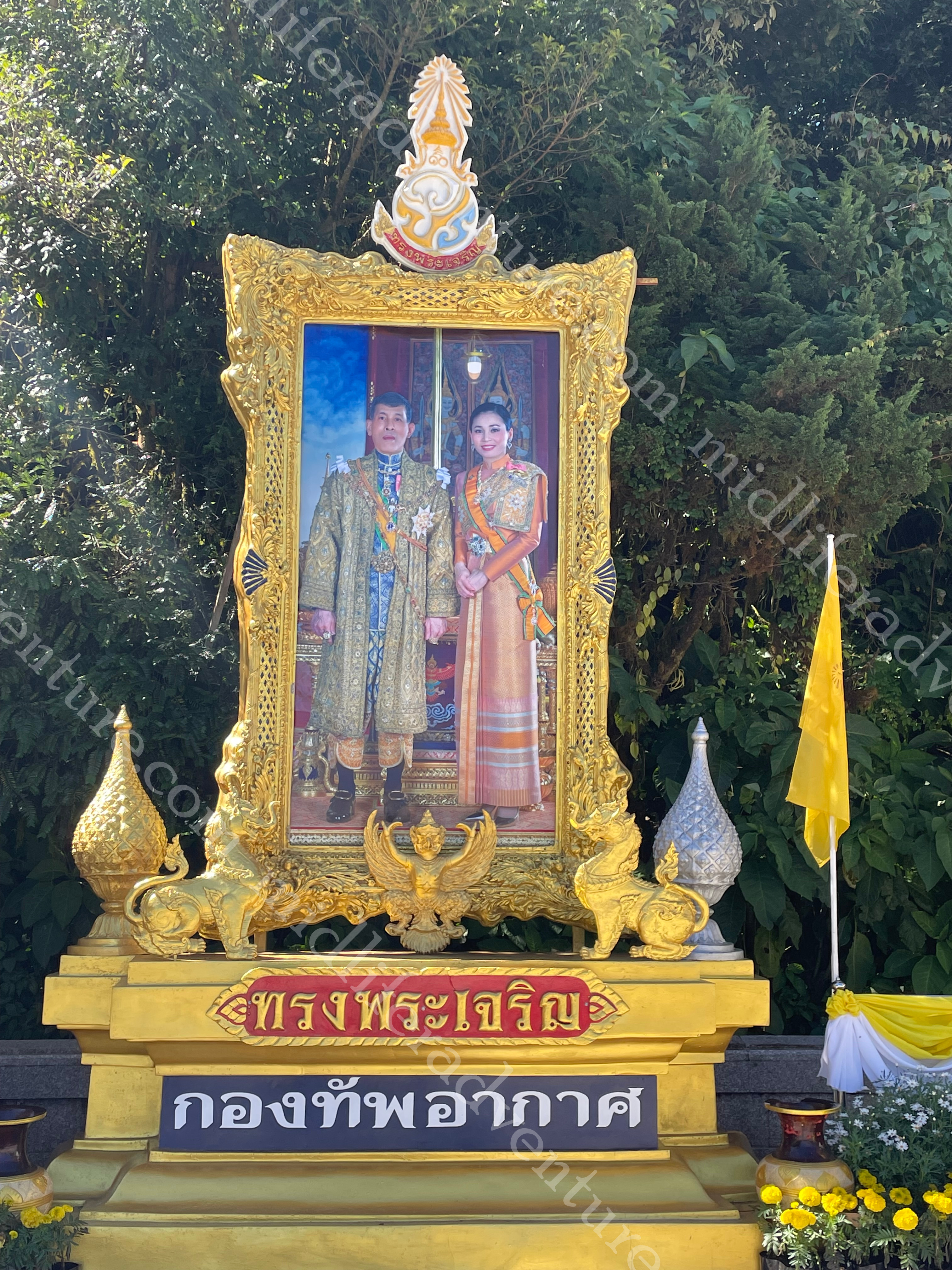
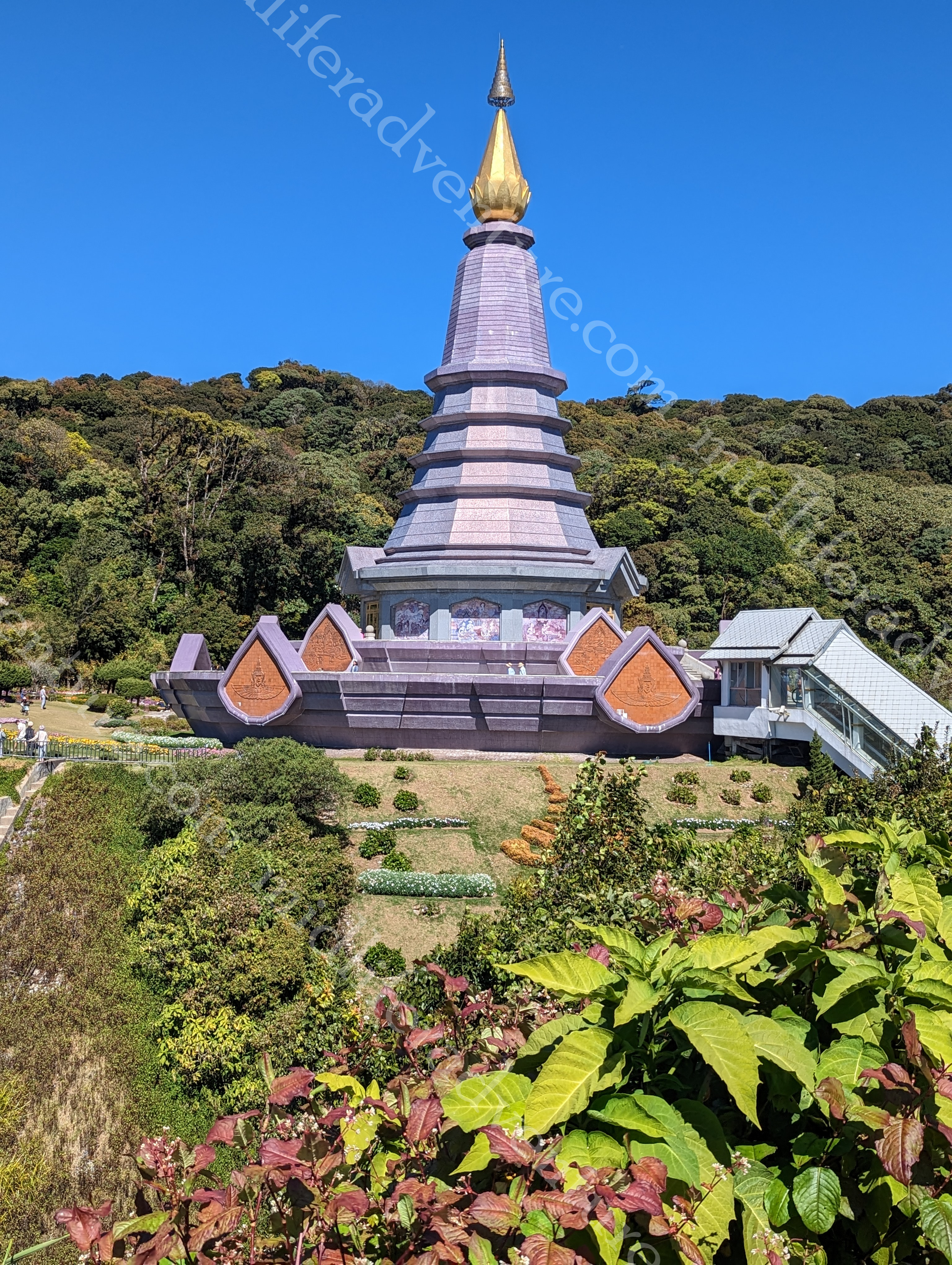

Chiang Mai Zoo and aquarium is a is a 200-acre zoo with over 400 species of animals that includes a 133m aquatic tunnel and they have a night safari. Oh Claudia, if you are reading along…they have pandas.
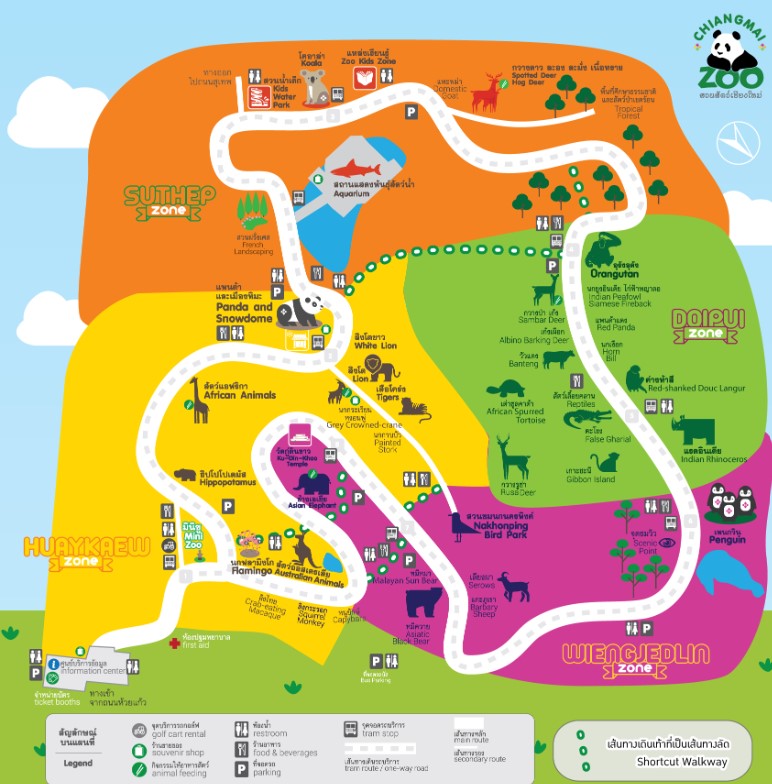
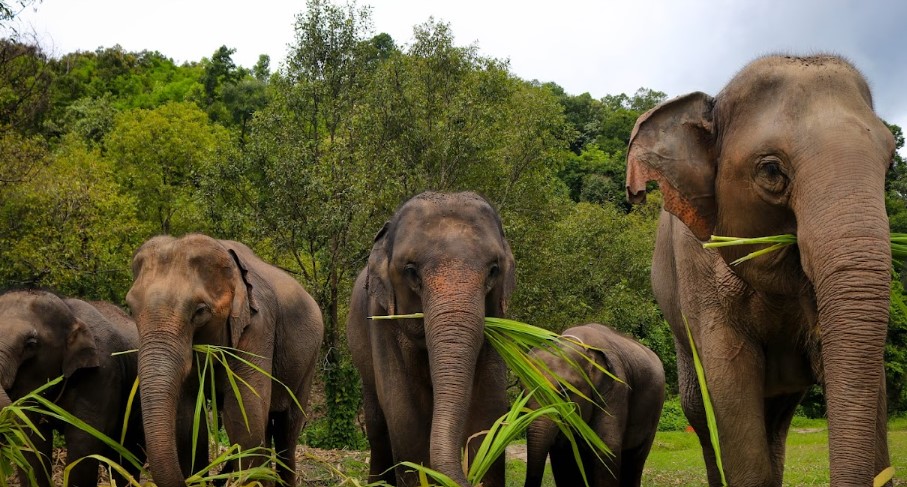
Elephant Sanctuary – The Meaklang Elephant Sky Camp is reported to be an ethical Elephant Sanctuary where the elephants are taken care of very well. The ads recommend that you bring spare clothes and a towel for if you join in to the elephant bathing.
As we have done numerous elephant sanctuaries in Sri Lanka and Laos we chose to skip this but those we met spoke highly of the experience.
Wachirathan Falls is one of the largest and most beautiful waterfalls in the country at over 80 meters tall the waterfall creates a mist that feeds the surrounding vegetation. Sirithan Waterfall is a stunning 50-meter cascade, fed by the Mae Klan River. Paths all around this one gives you many angles and photo opportunities.
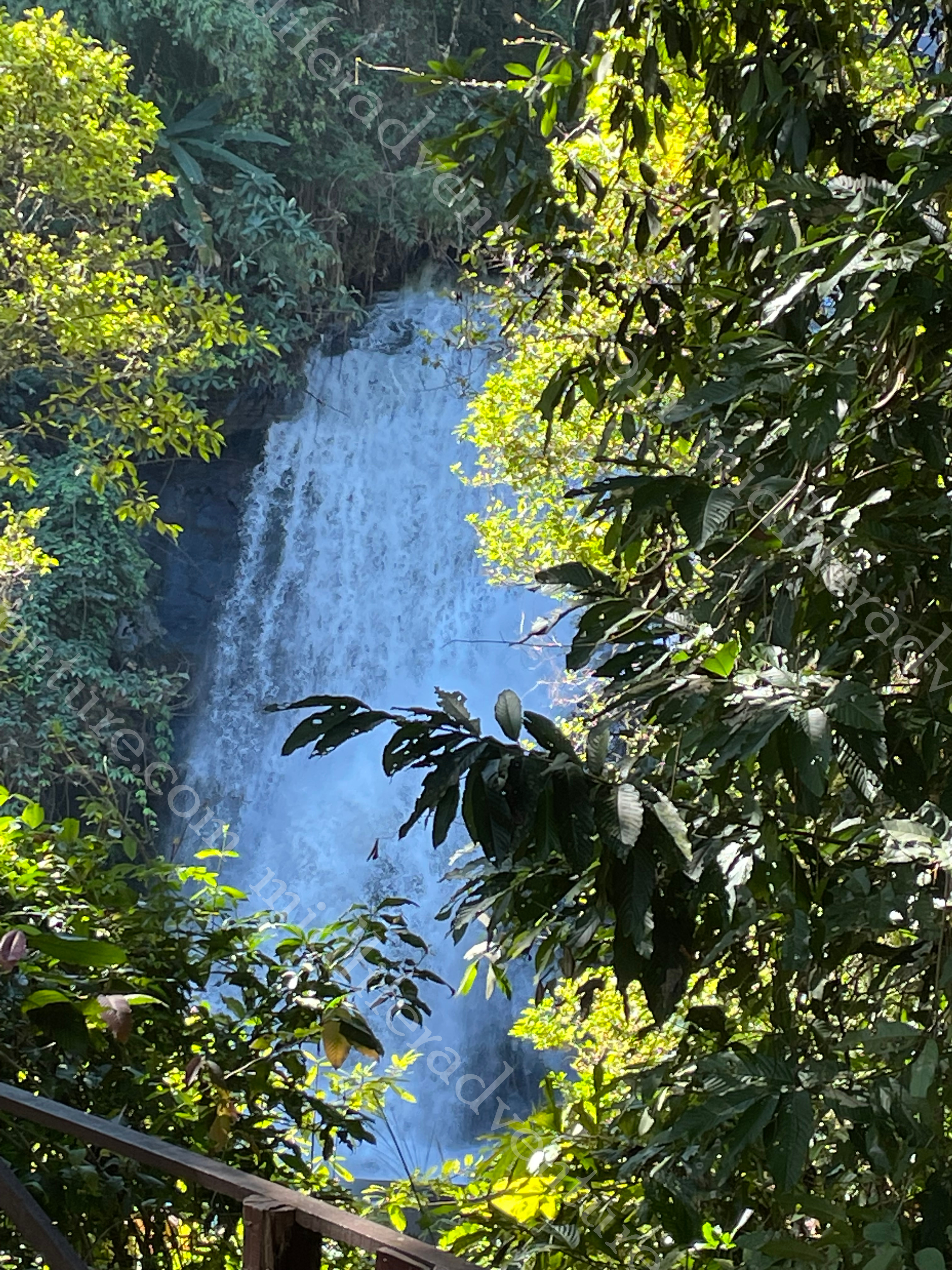






Chiang Mai Street Art
Similar to Penang, Chiang Mai has a thriving street art scene that has not been advertised and is rarely written about. So much so that we didn’t even know to look but Jill kept stopping and taking photos of these amazing scenes or funky pictures. The same sort of thing exists in Penang but somebody has put it together as a tourist attraction as a sort of hide and seek for the artworks.
The same thing could easily be done here. I am certain that we have missed a heap of these and a google images search assures us that we have, and we saw others but parked cars ruined photos. The bottom line is that if you care to look there are amazing artworks often hidden down tiny alleys or side streets and if you are willing to roam patience is required to find these hidden gems.
Long story short – here is a business opportunity for anyone willing to make a map and add it to the tourist agenda. A complete list of the artworks and a treasure map of where to find them would keep people amused for hours and would add greatly to the local tourism scene and things to do list.



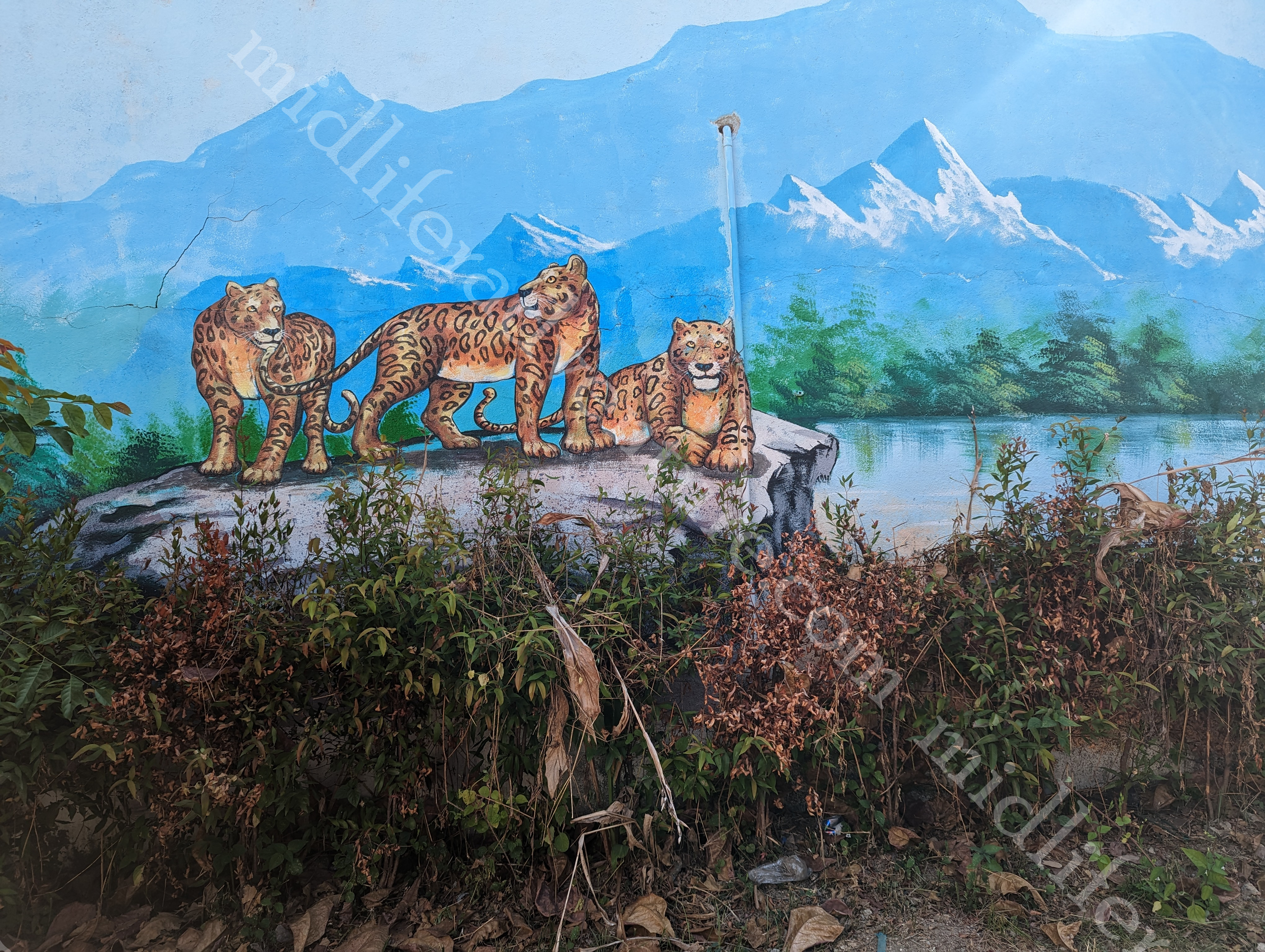
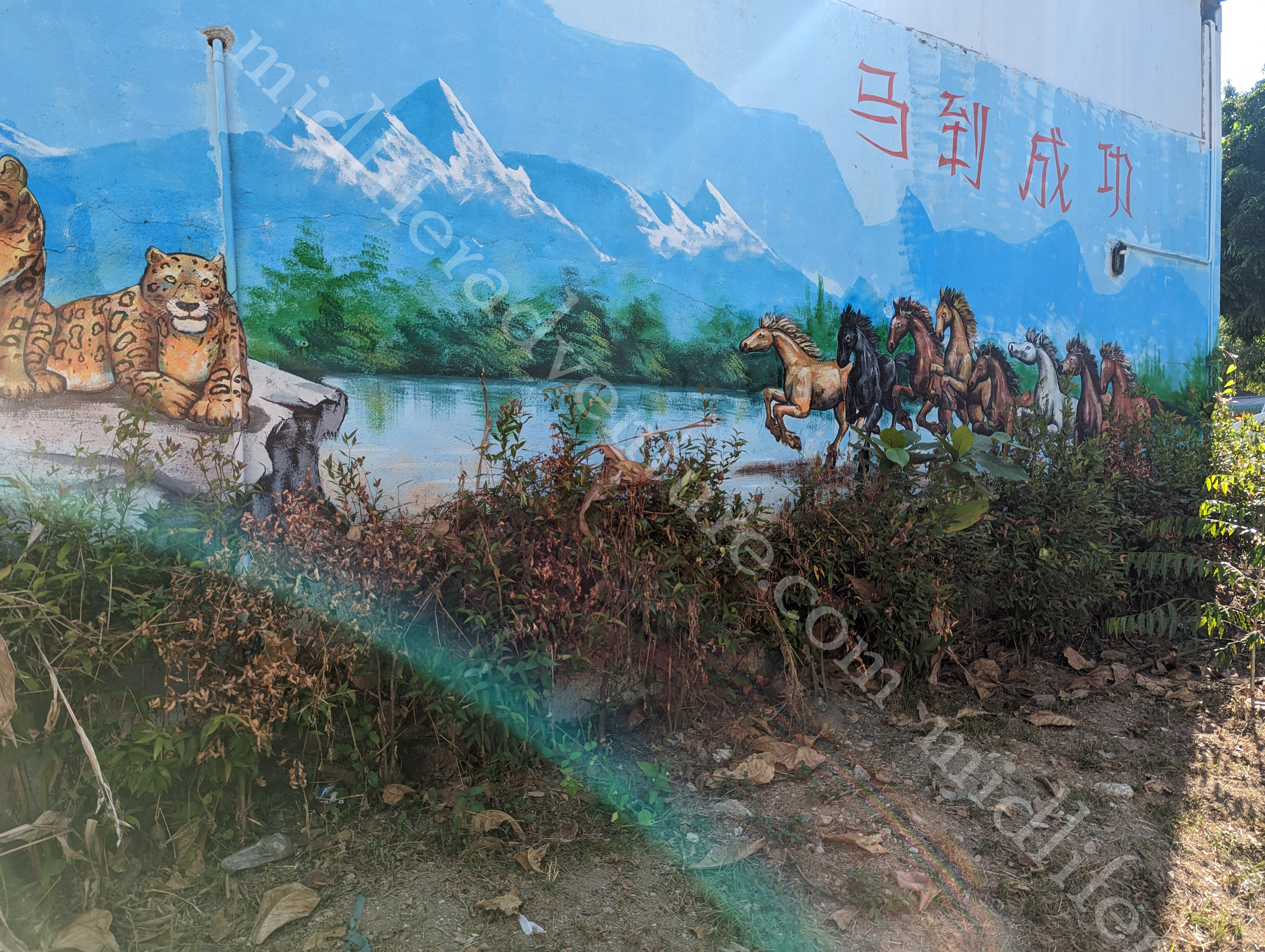
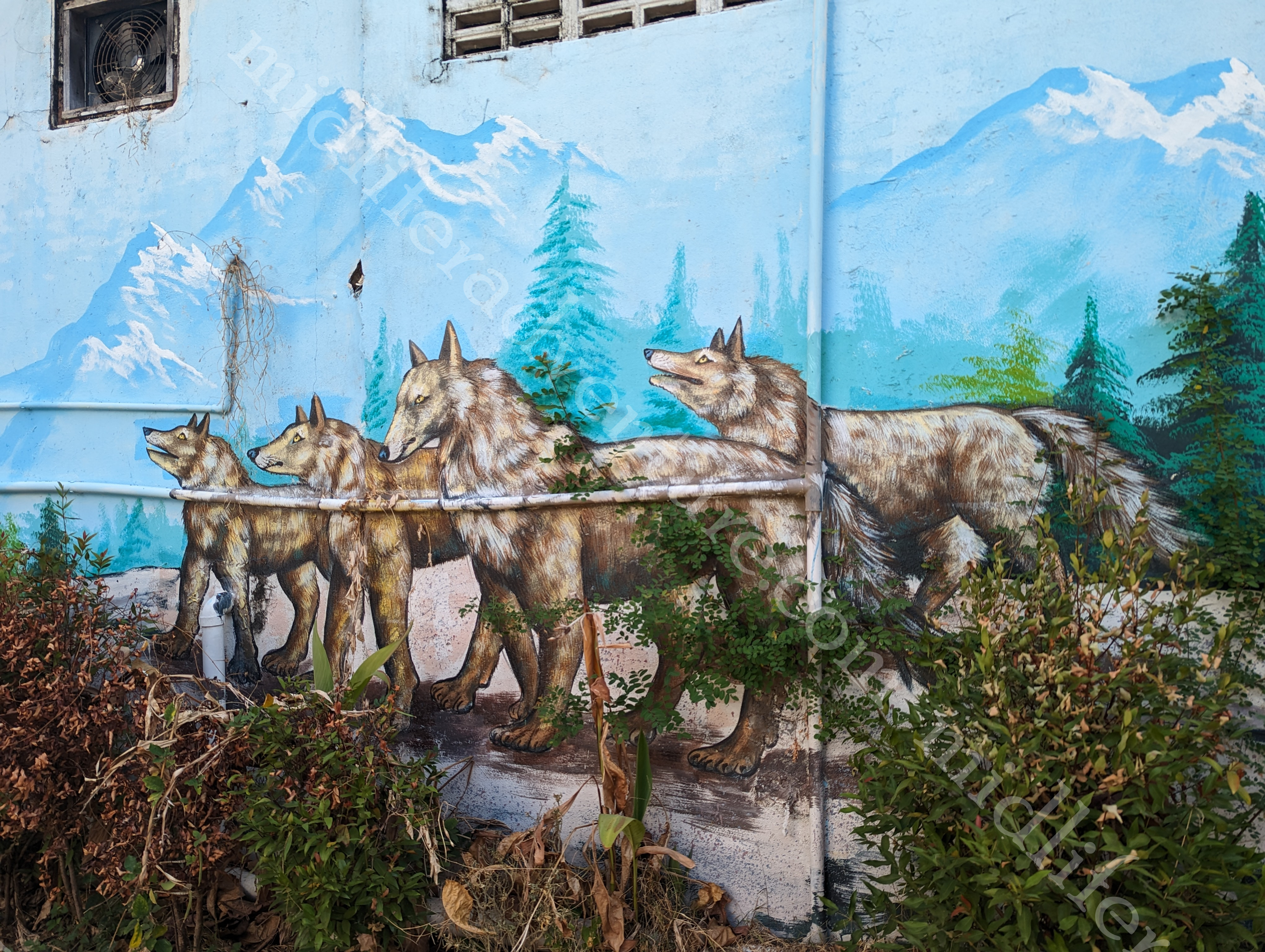


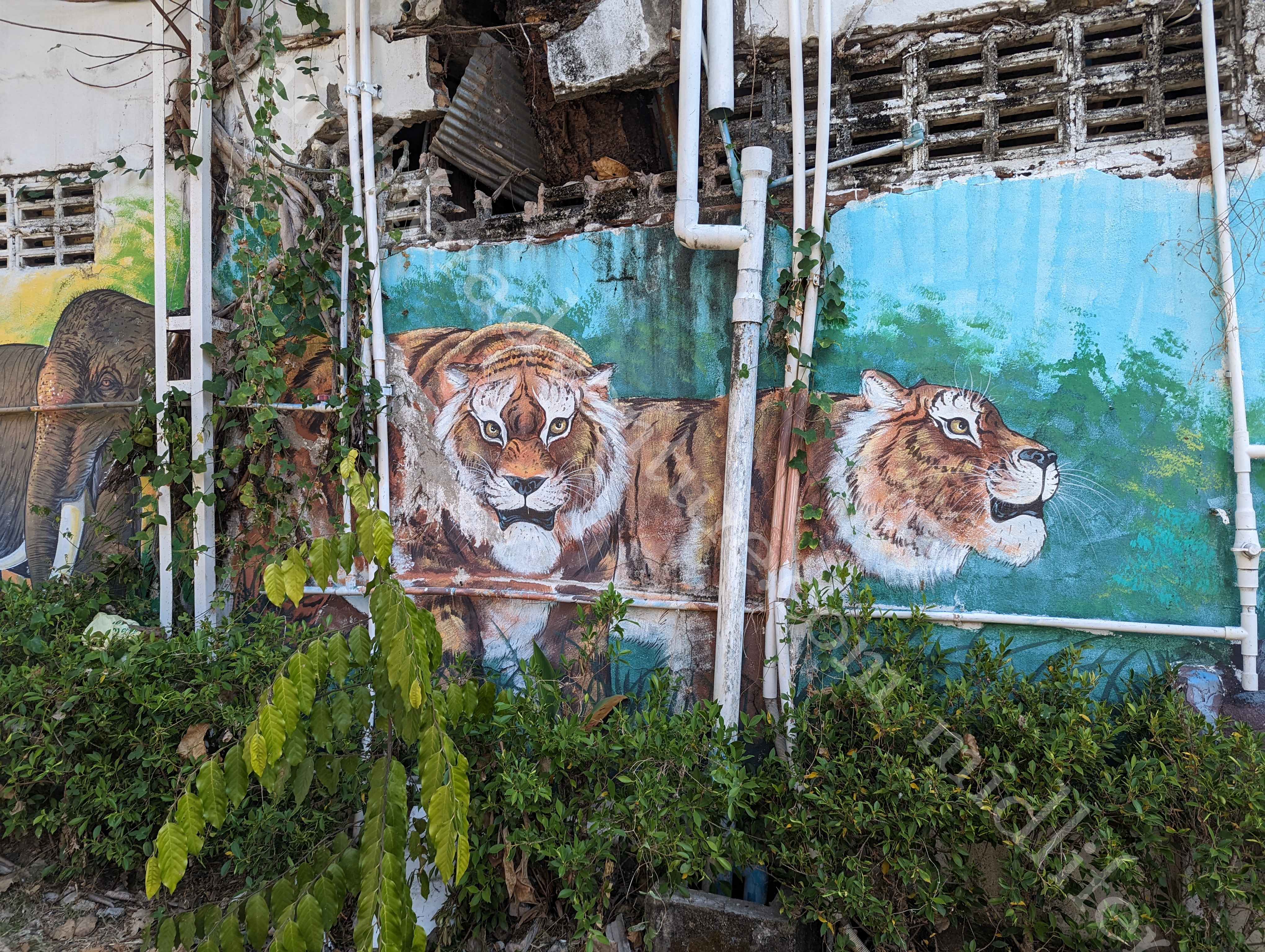
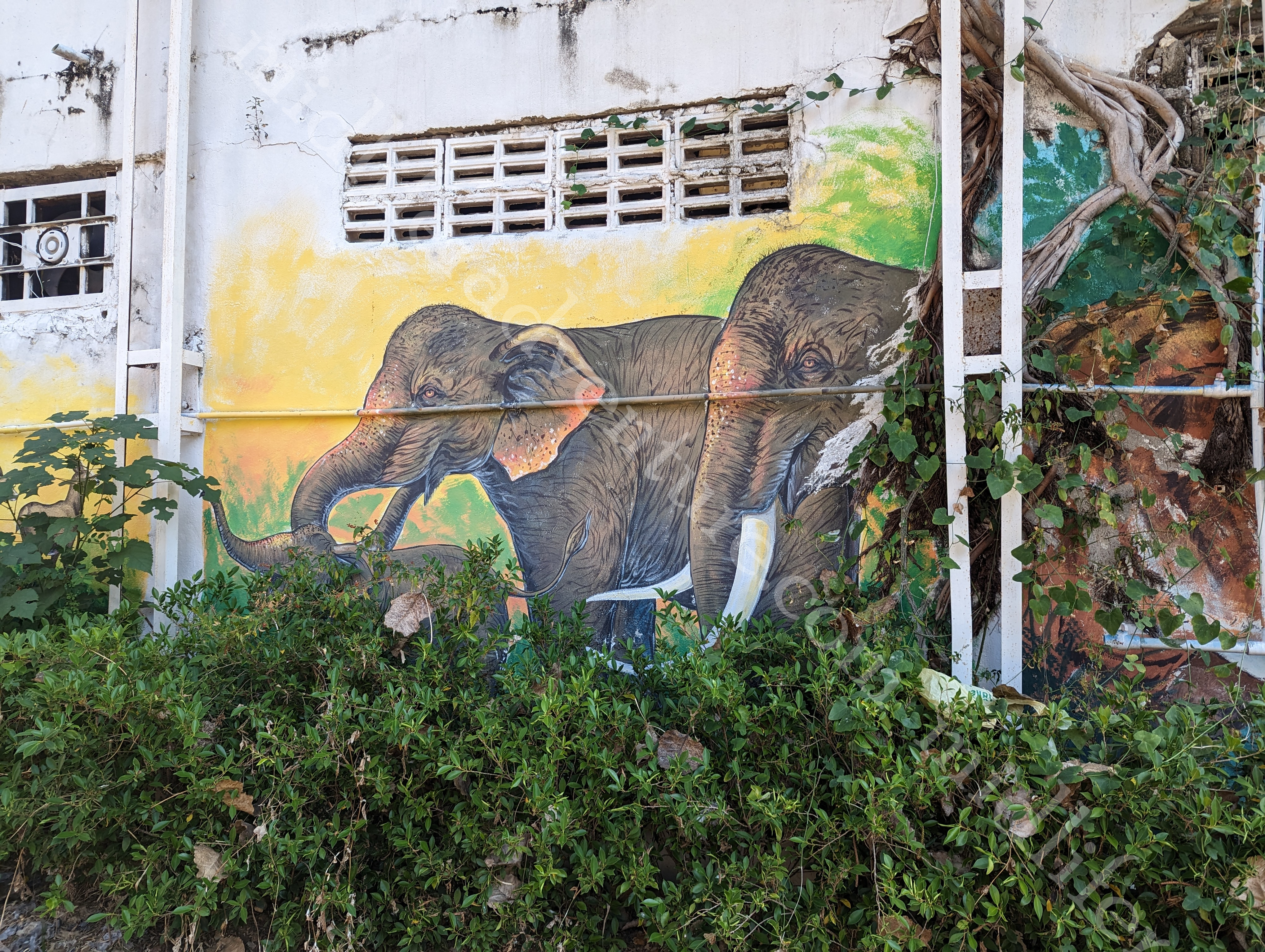

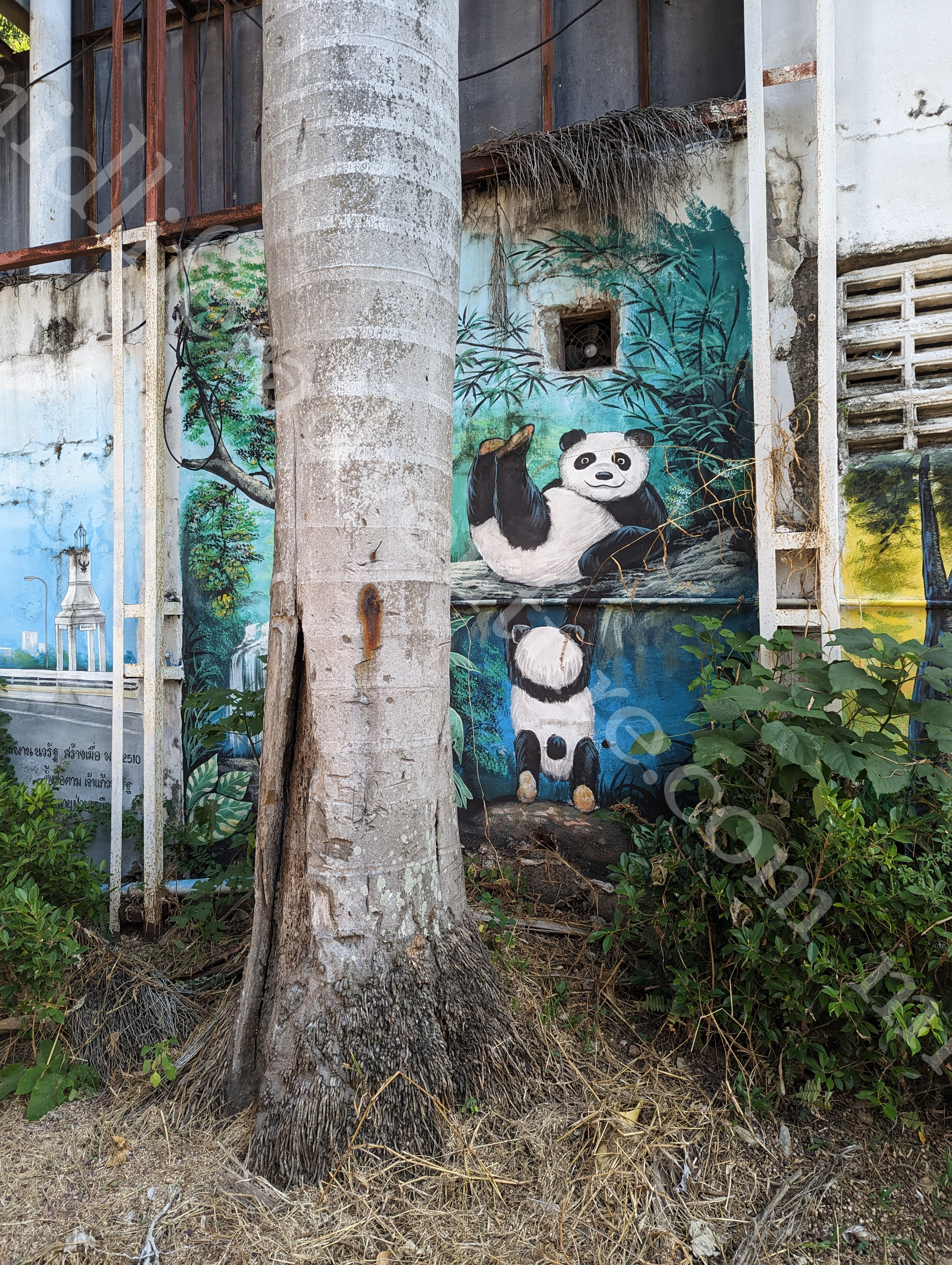
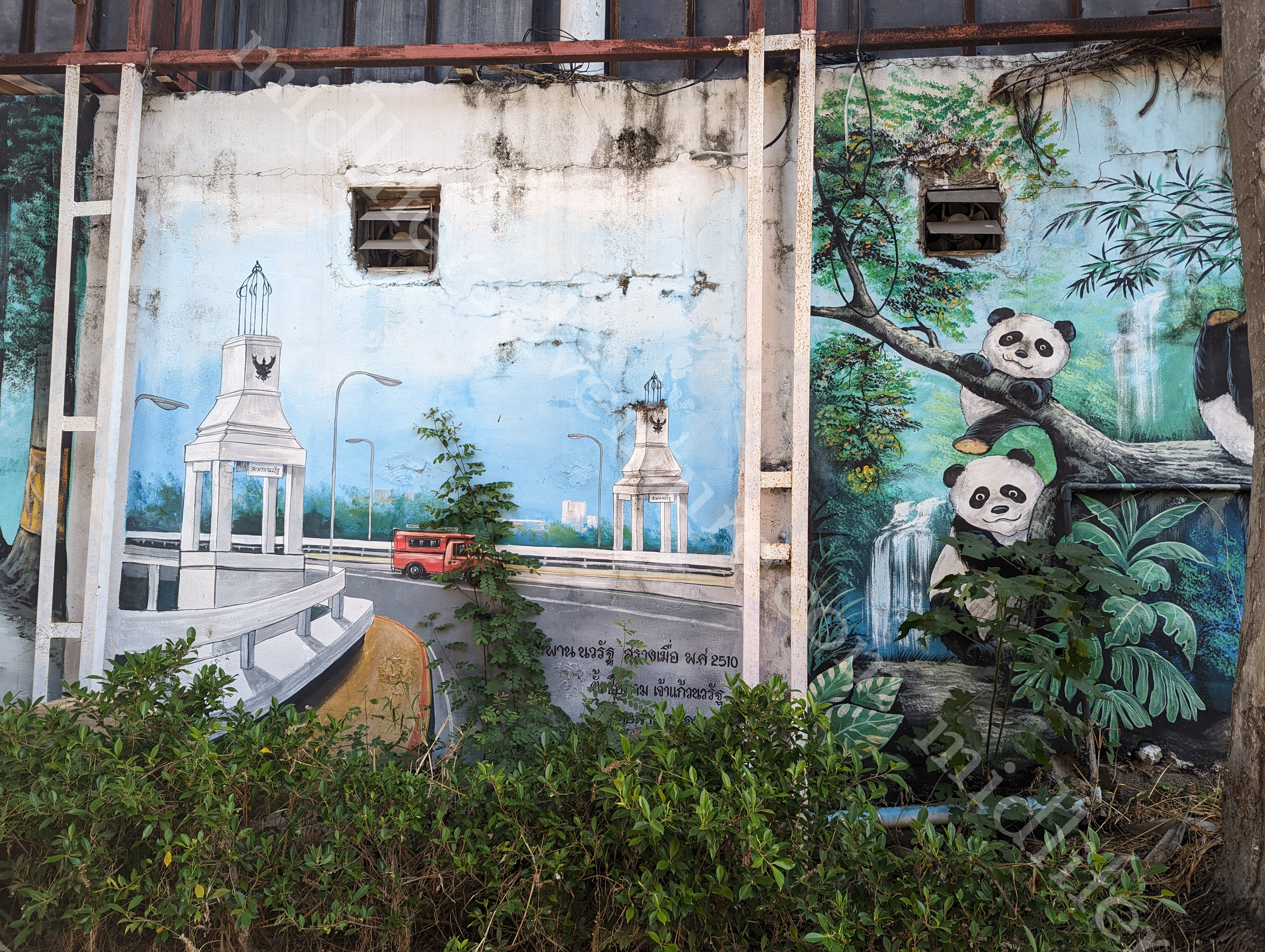






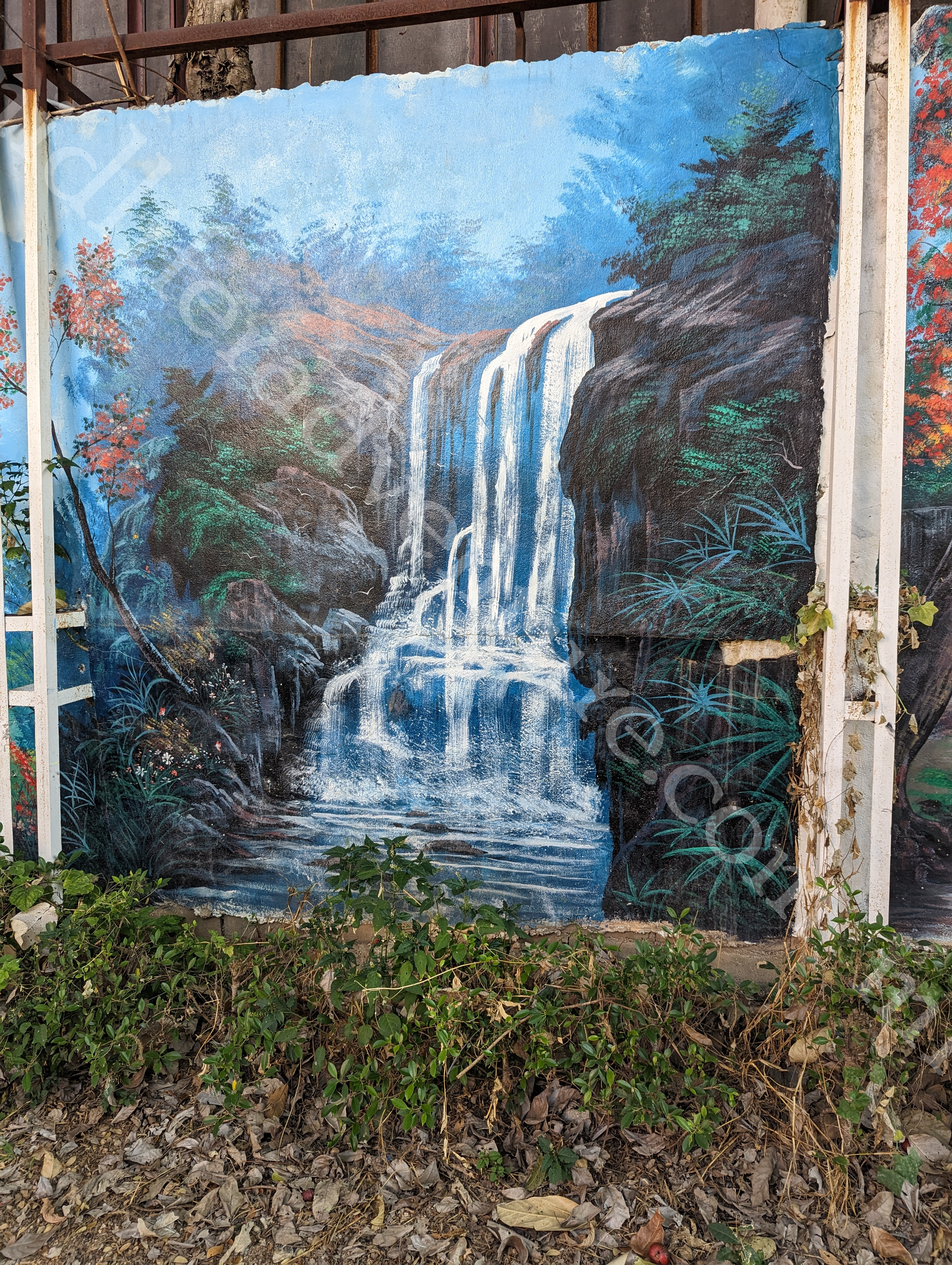

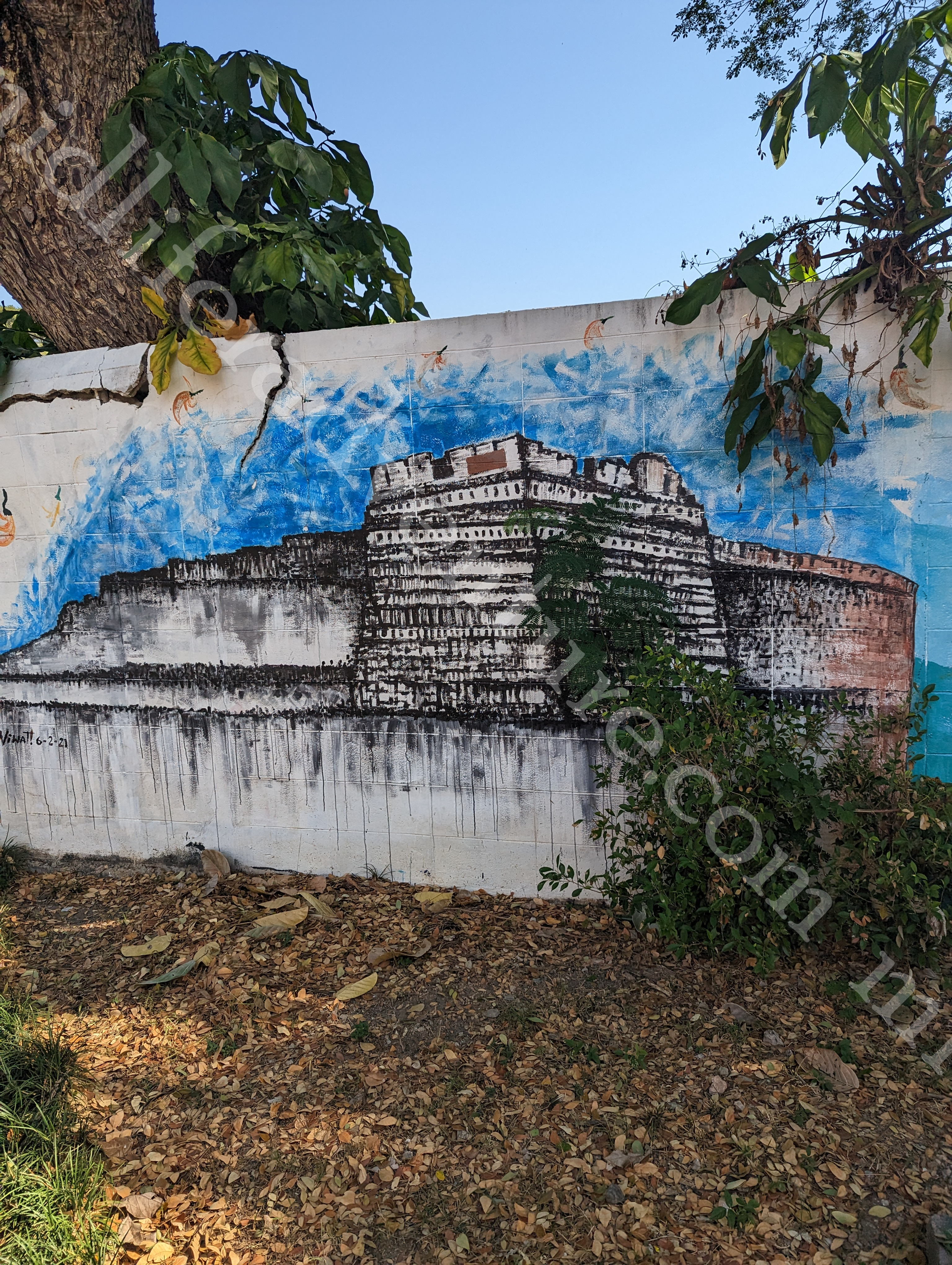



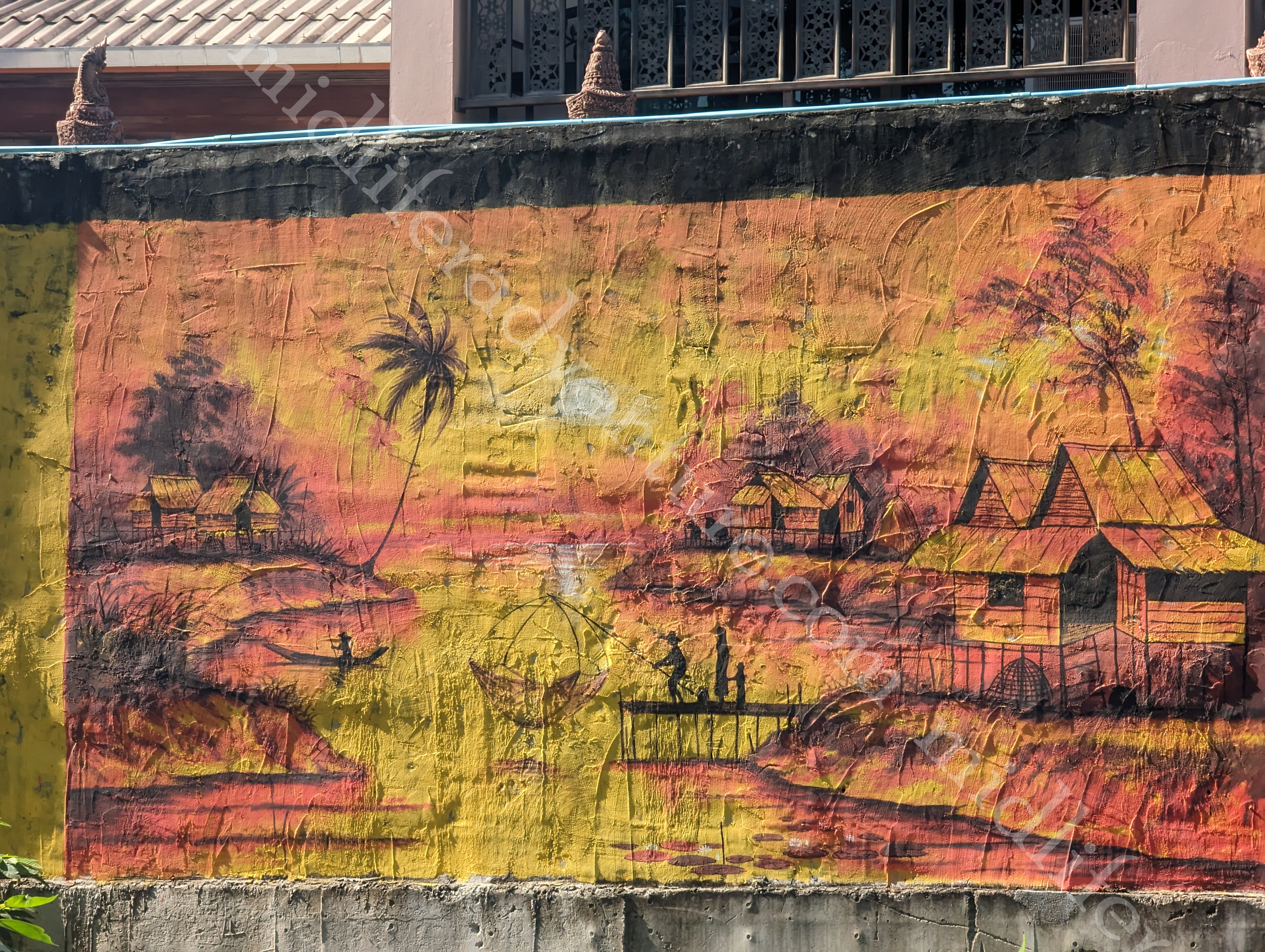



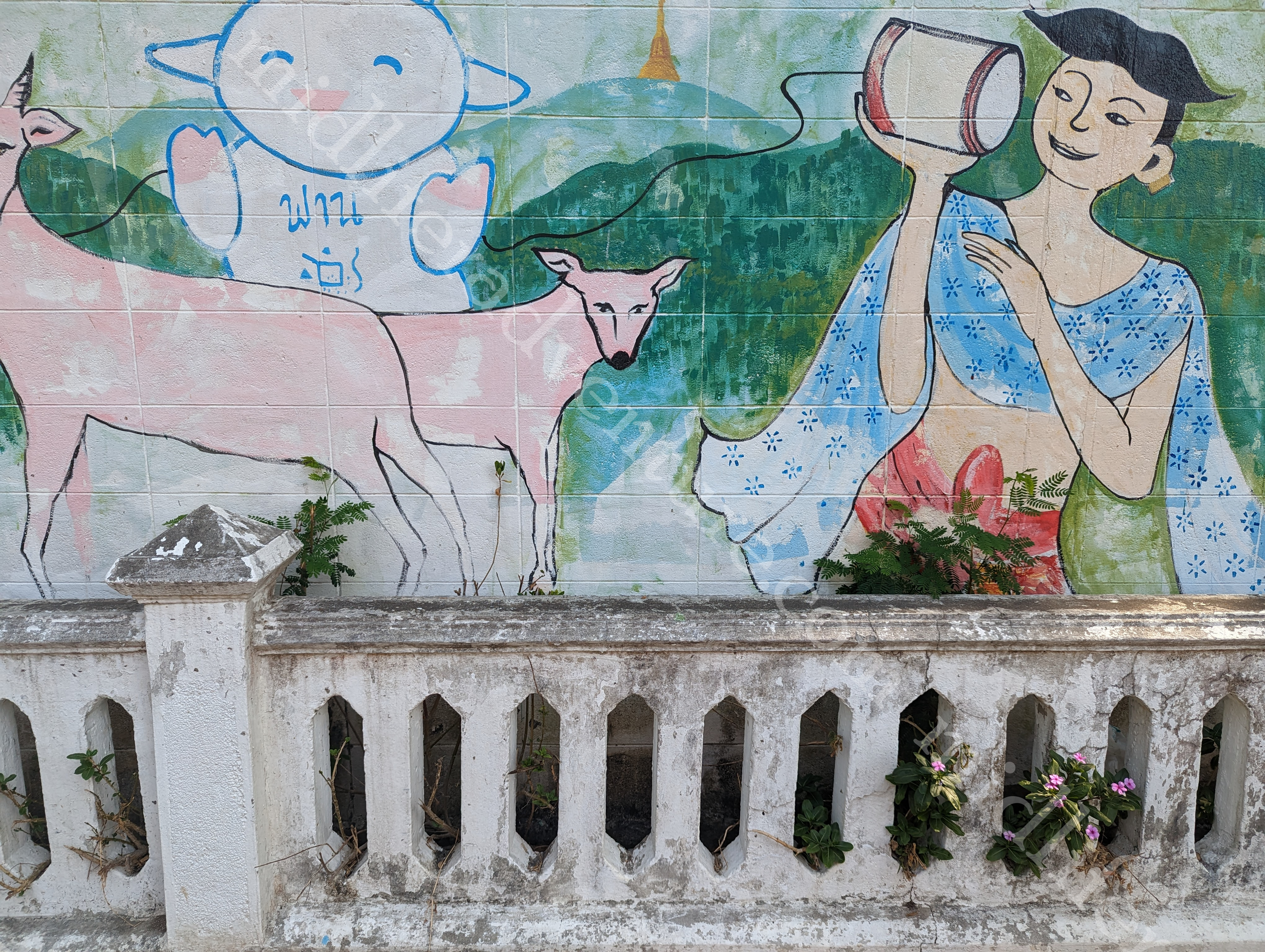
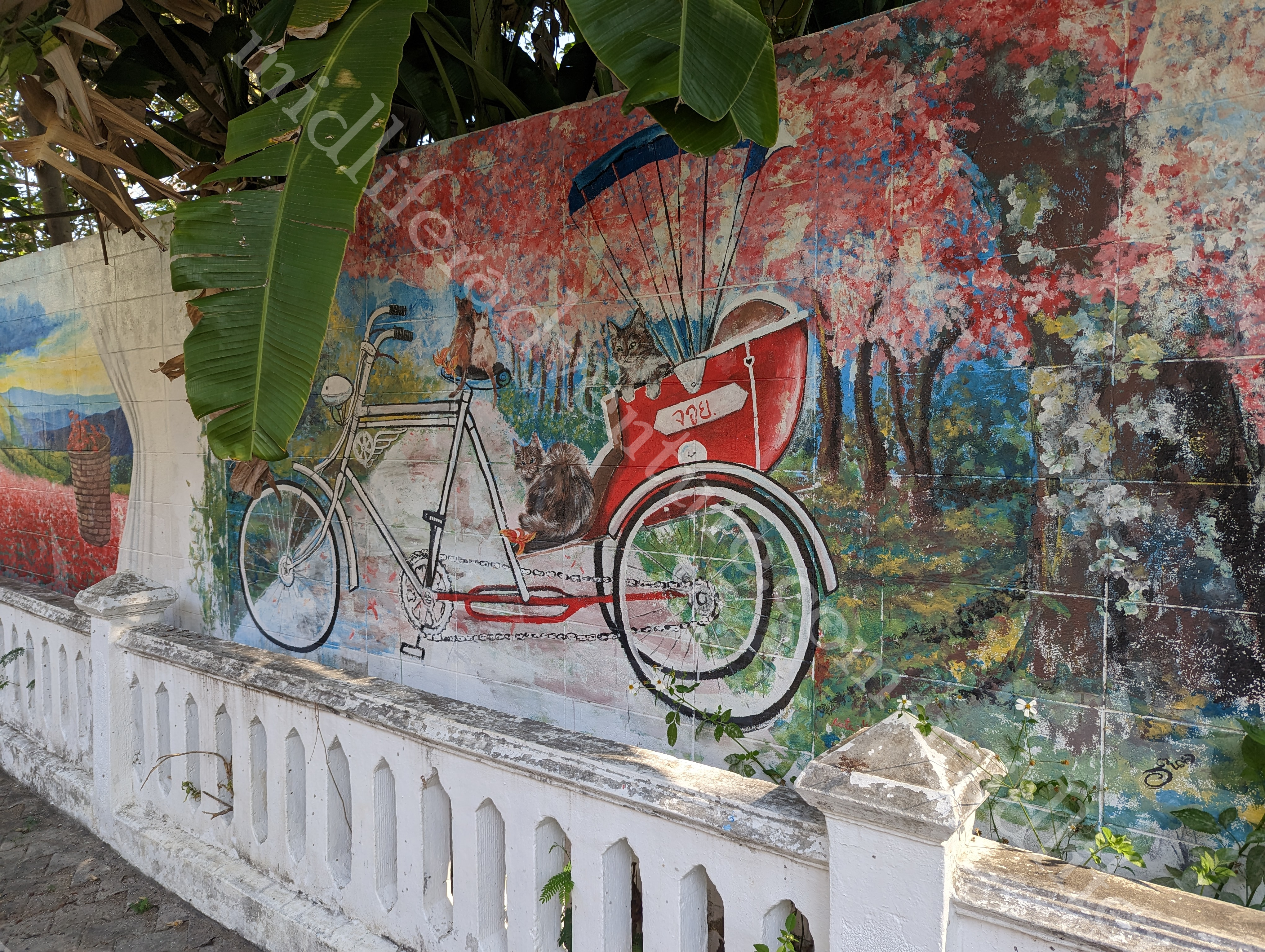
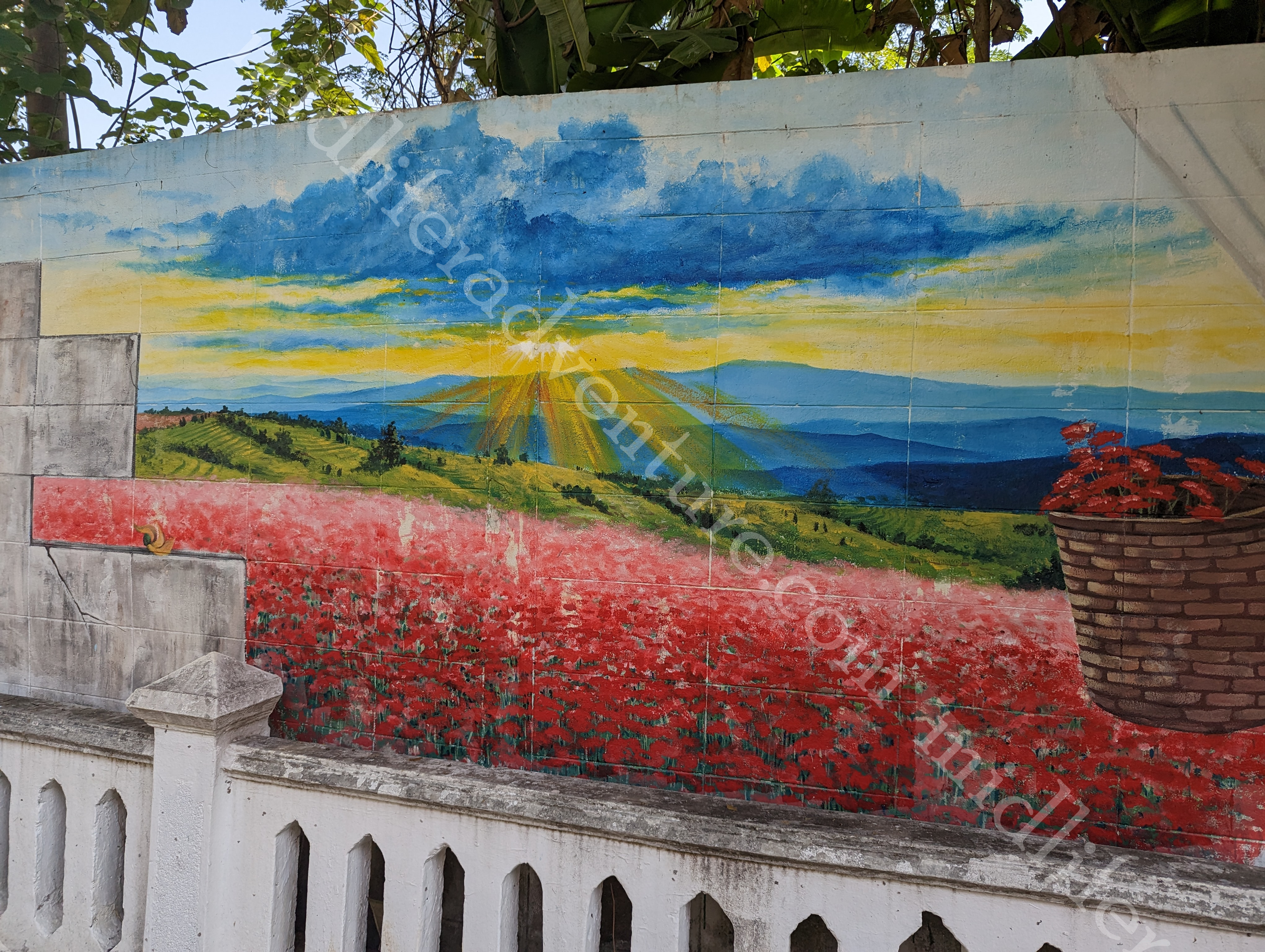
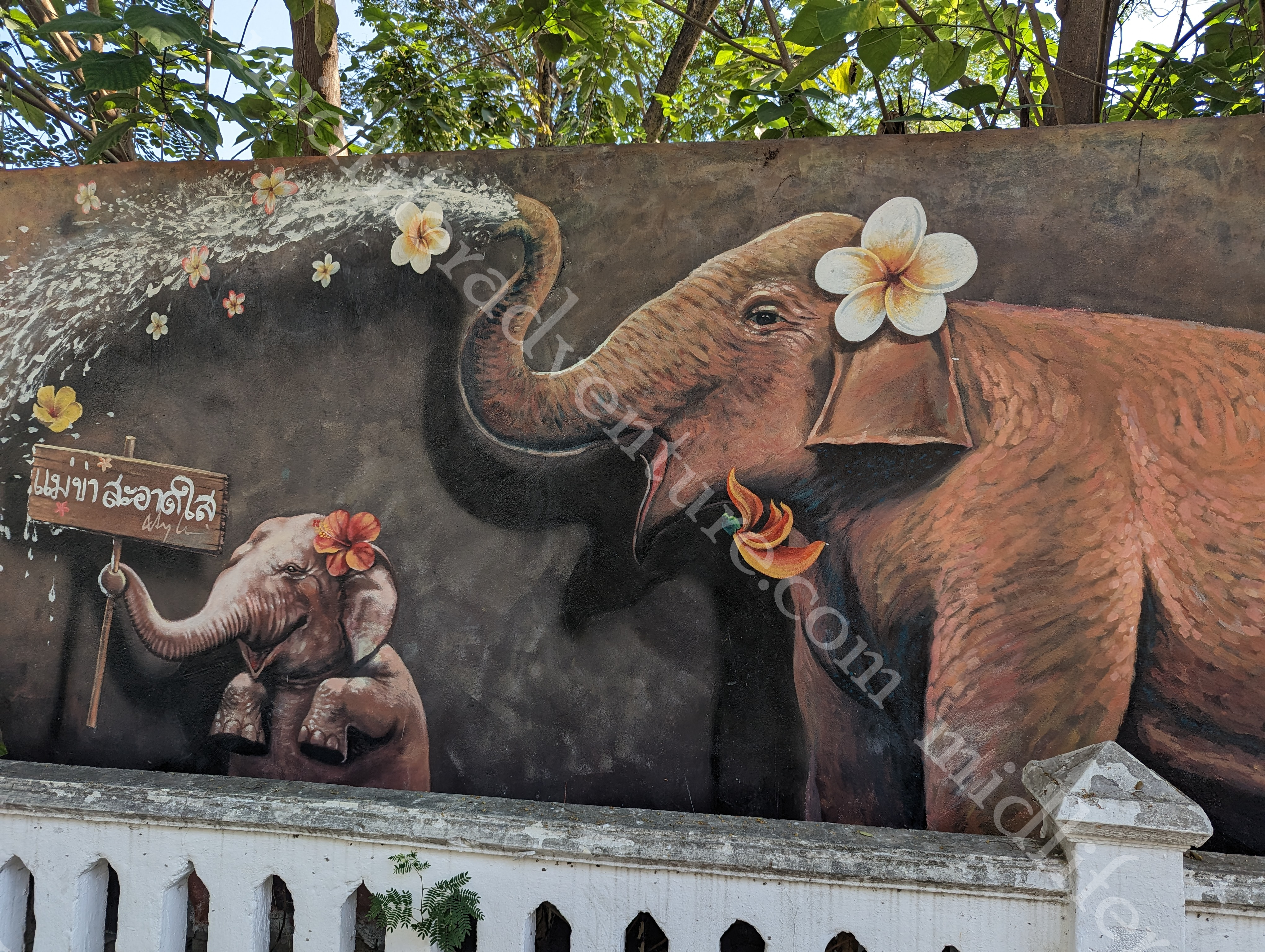



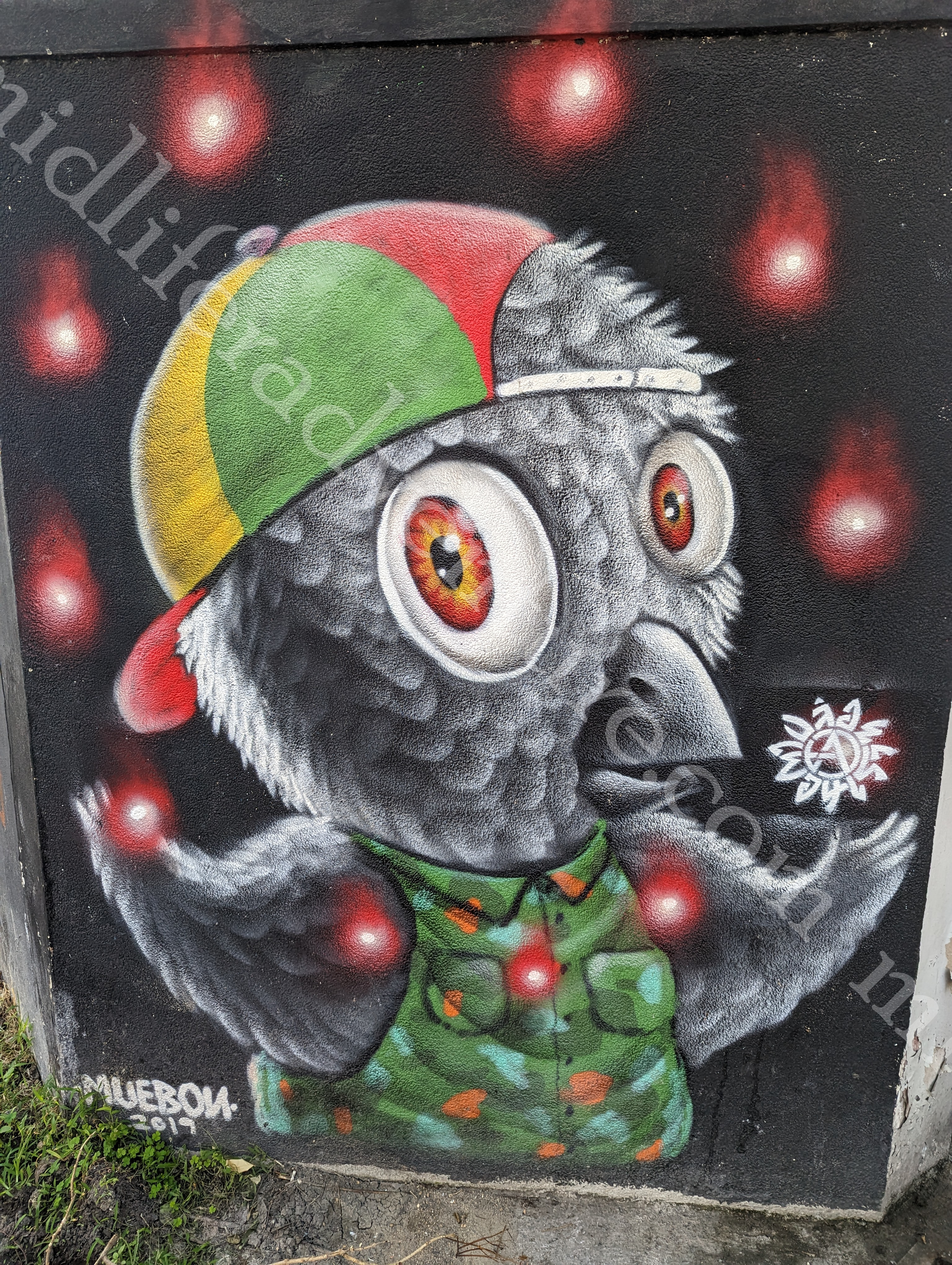






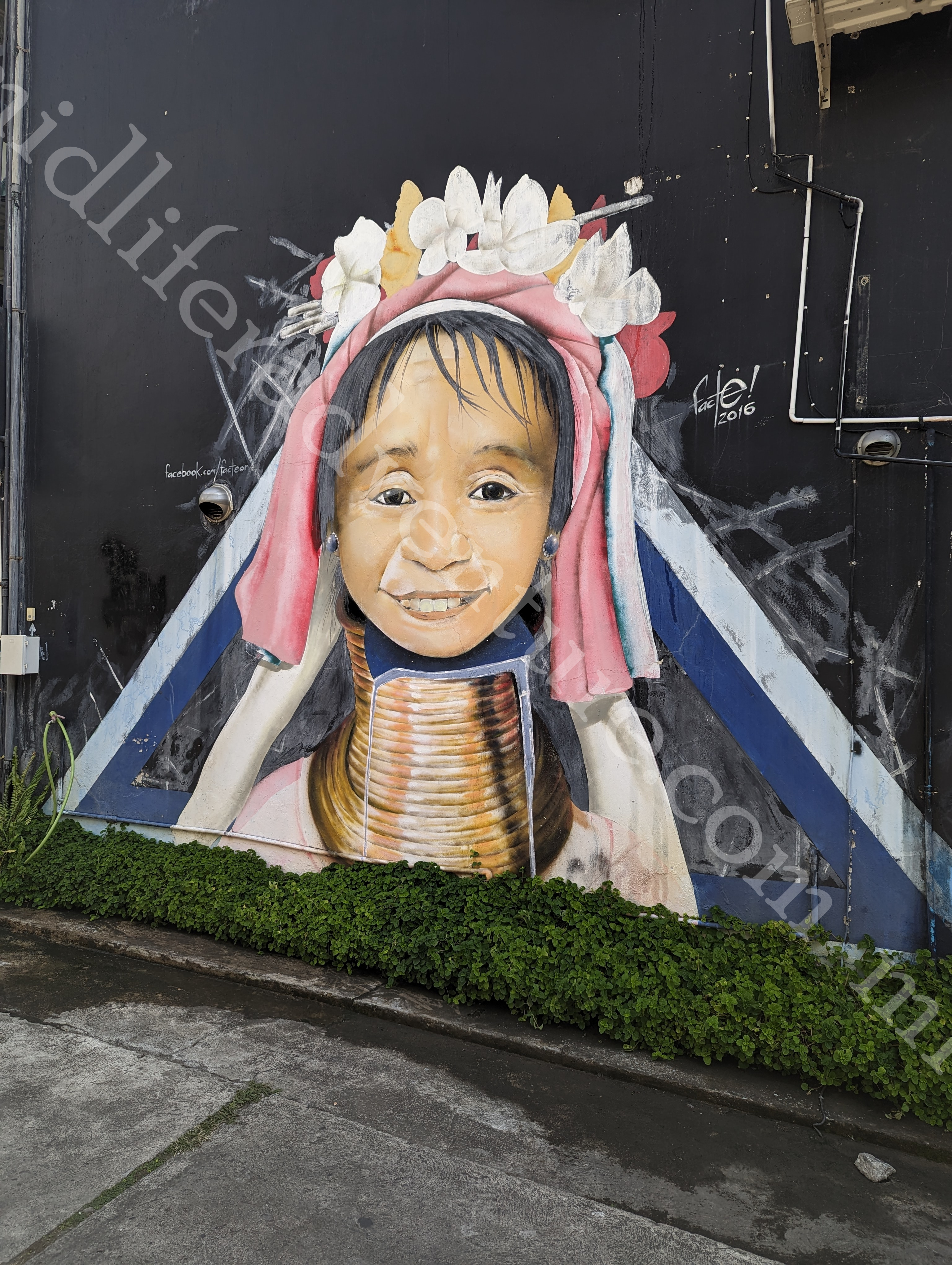
Weed-Cannabis
This bit surprised me a little given all that we Aussies have heard about Thailand’s tolerance of drugs – or lack thereof. Cannabis can be bought simply and easily almost everywhere through old town and beyond. The smoking of weed is totally legal at home or in private places but not in public.


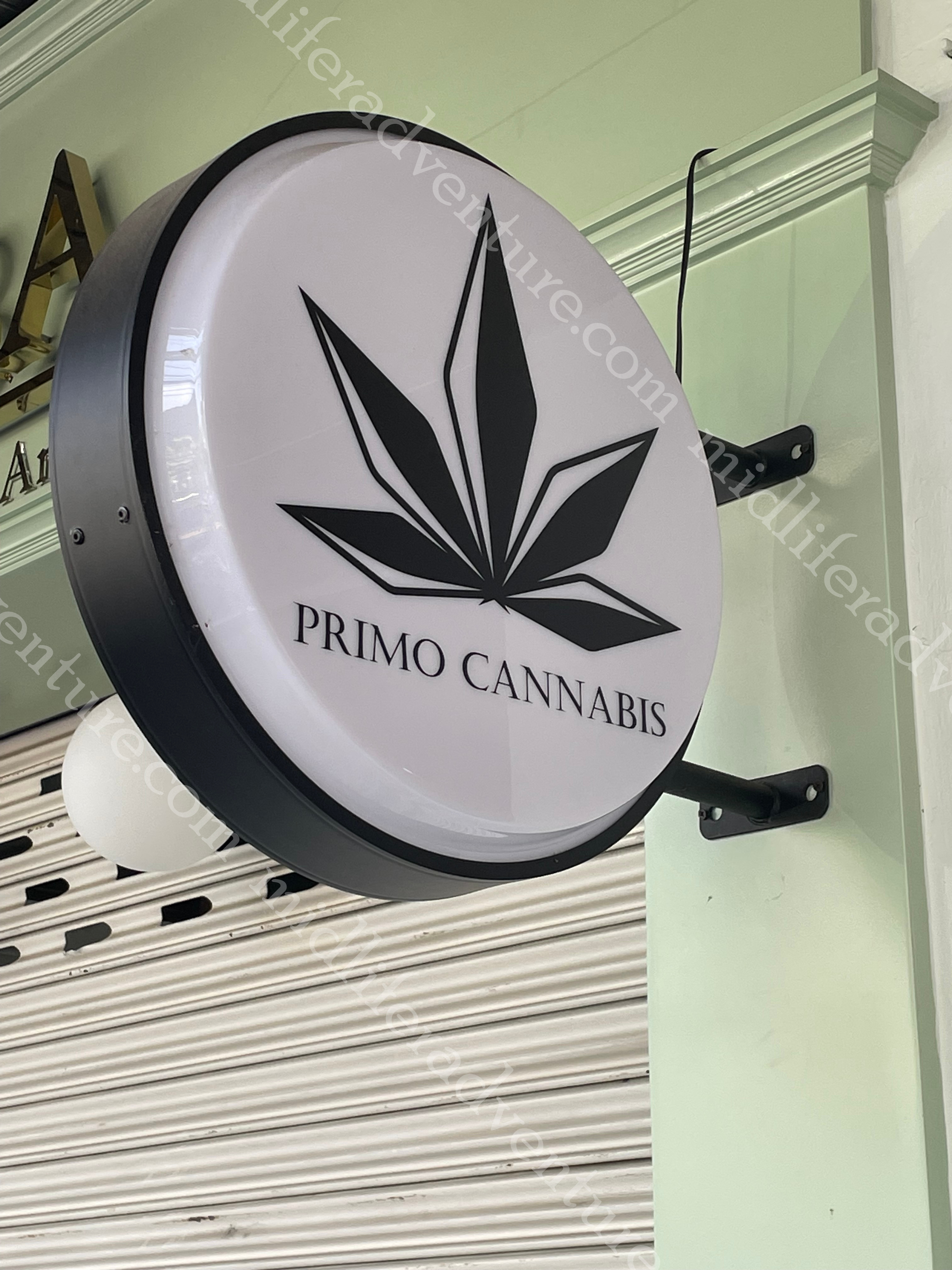
WARNING – Fines for smoking weed in public are about $1000-1200 Australian and 3 months imprisonment.
This was either unknown to the backpackers or they just didn’t care as it didn’t seem to stop them smoking away as they walked down many of the streets and alleys late at night.